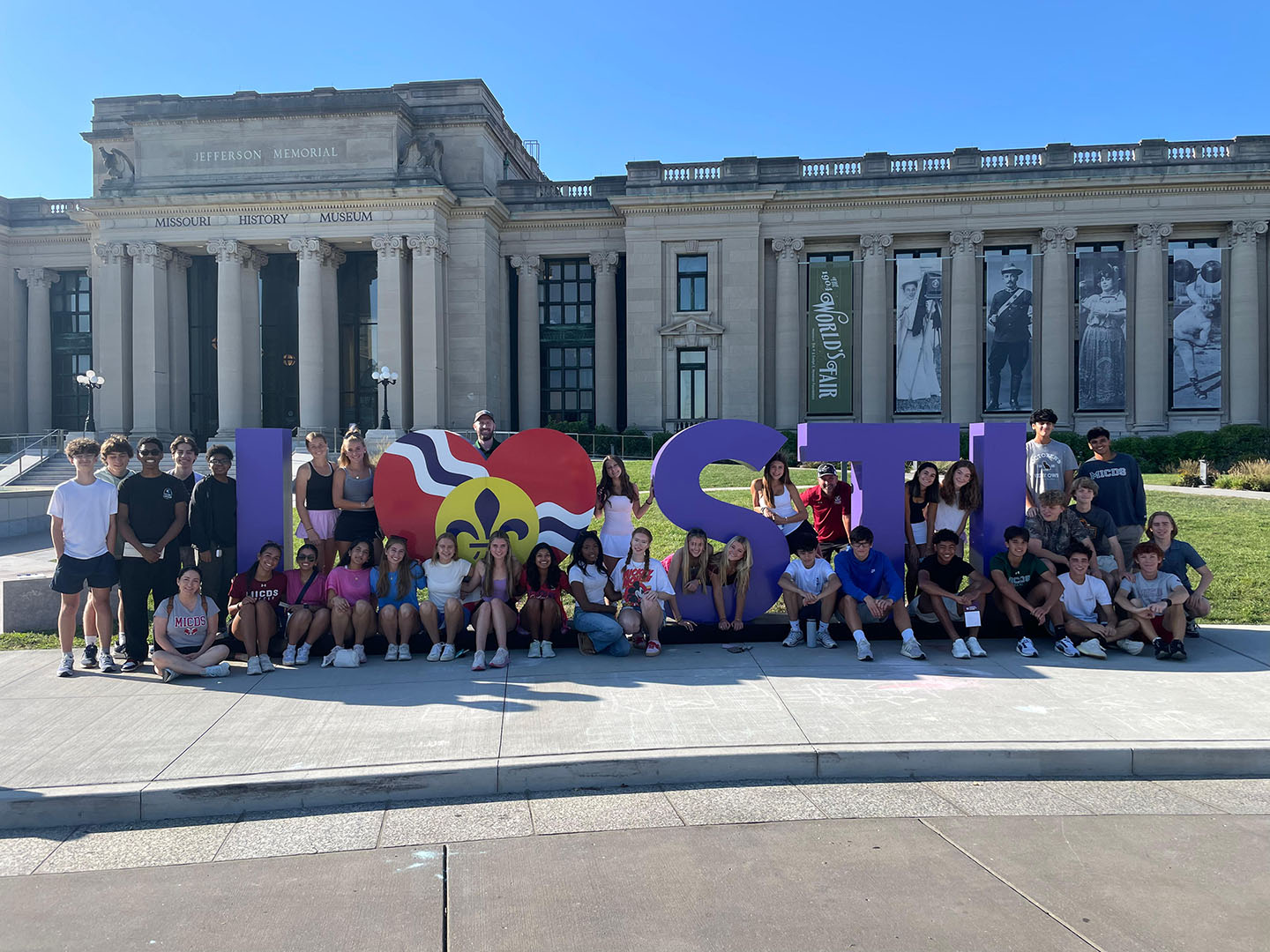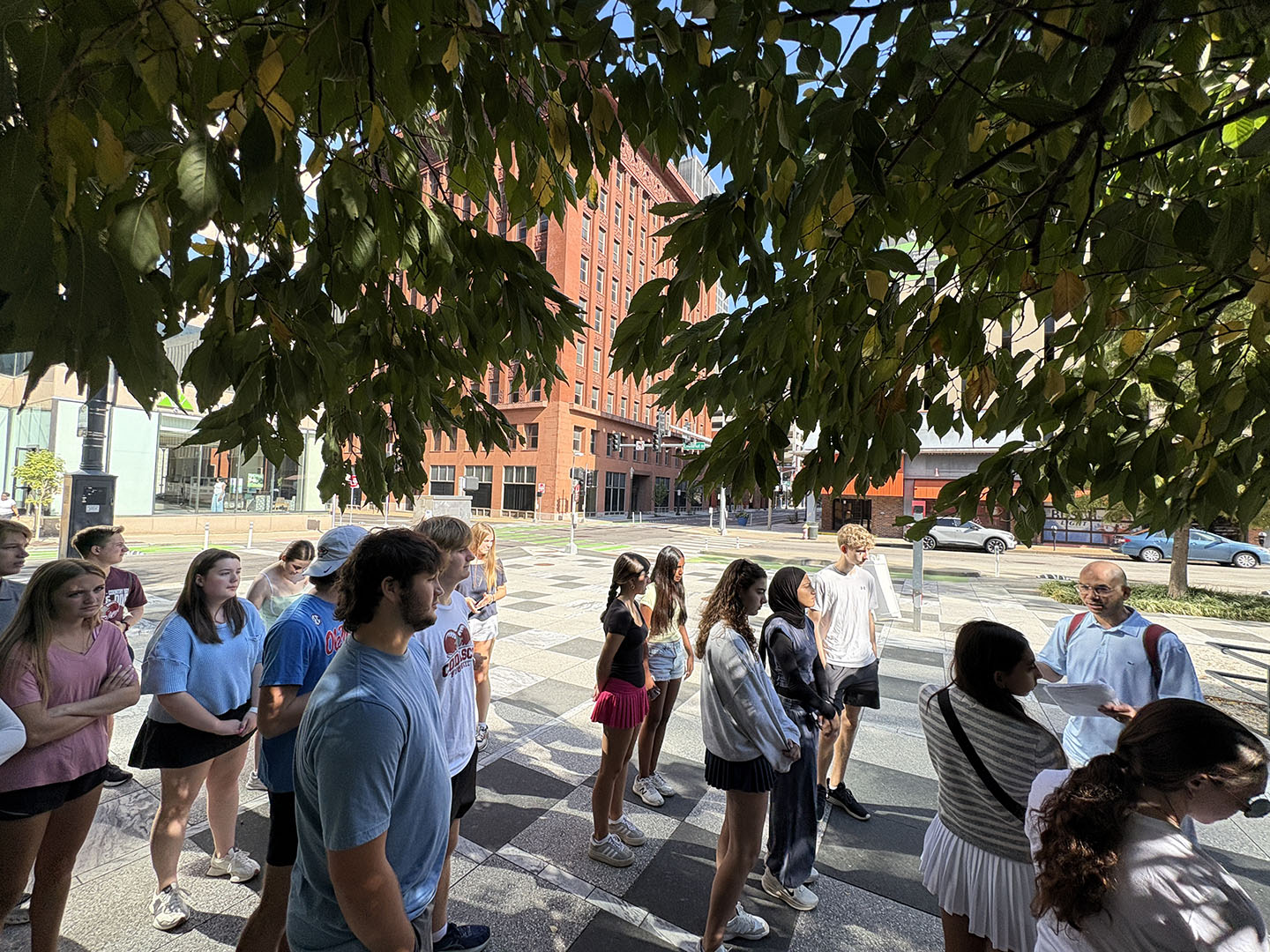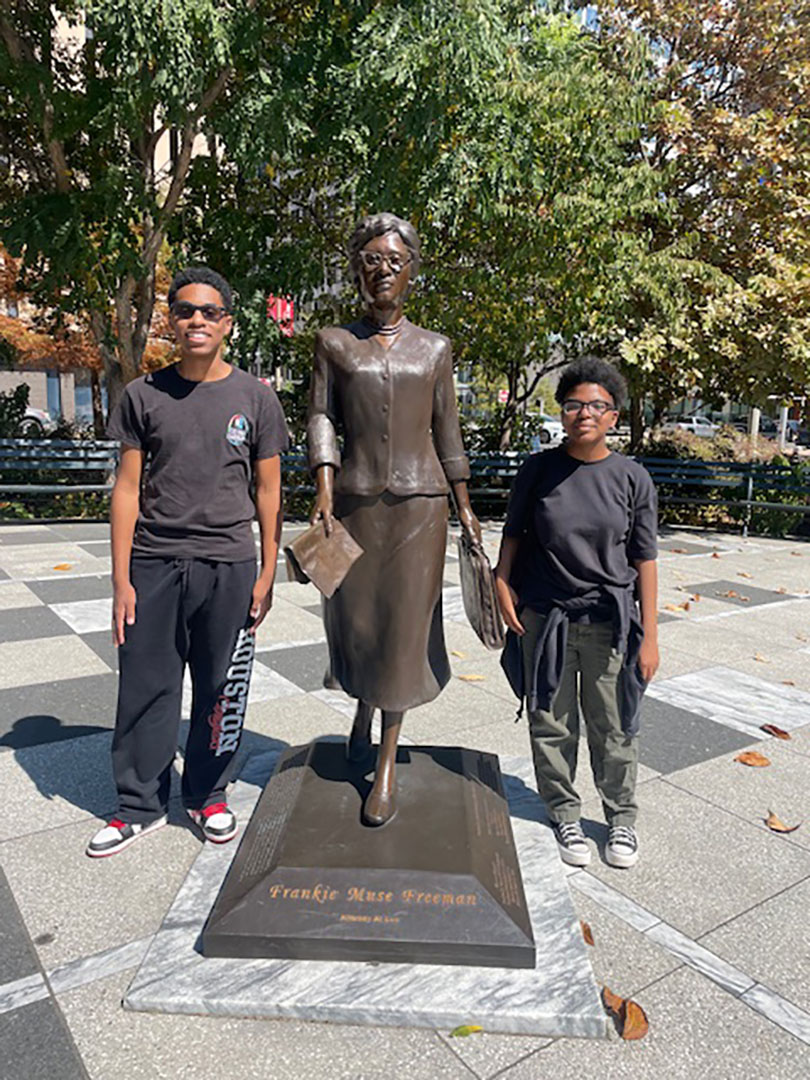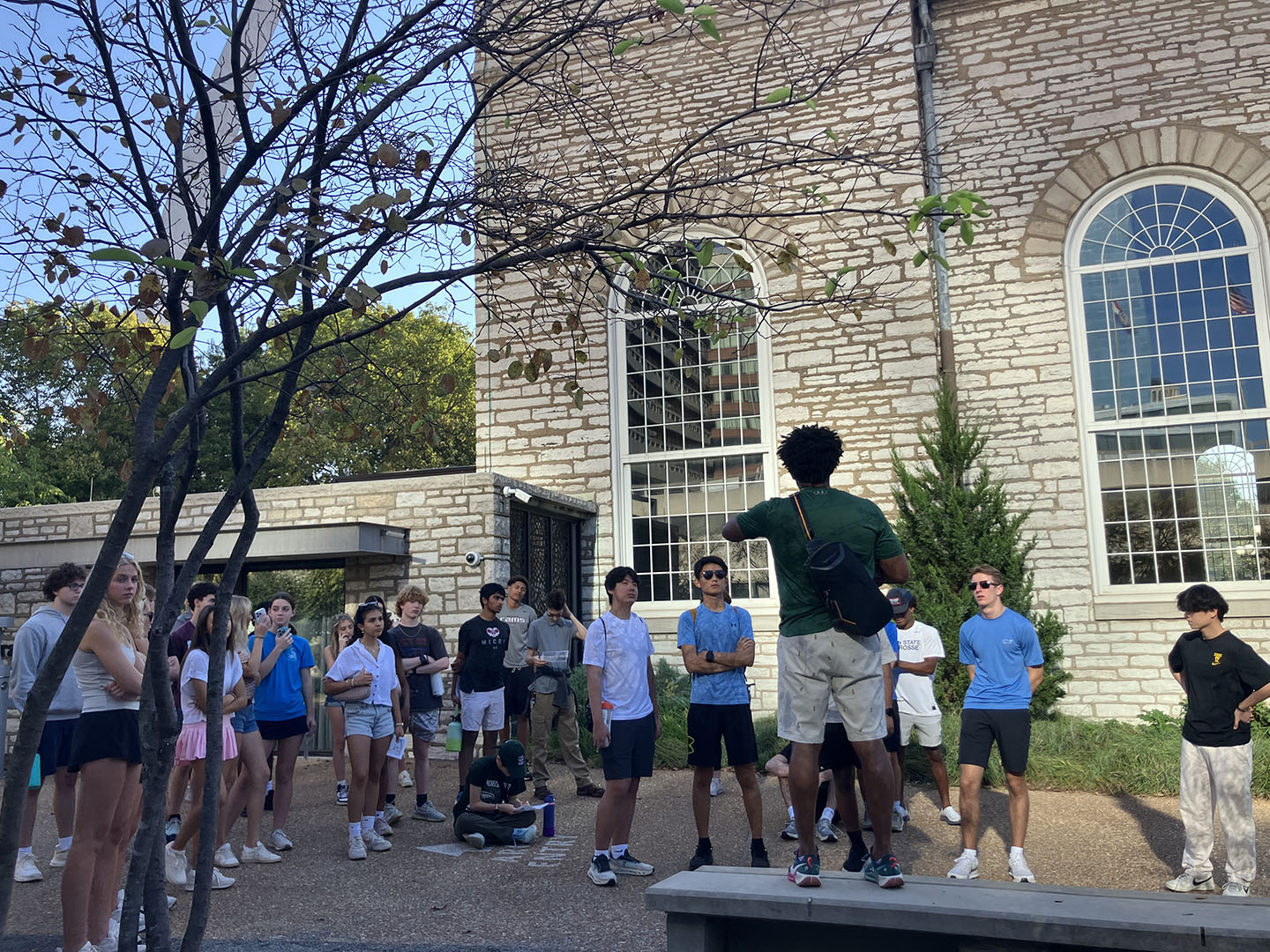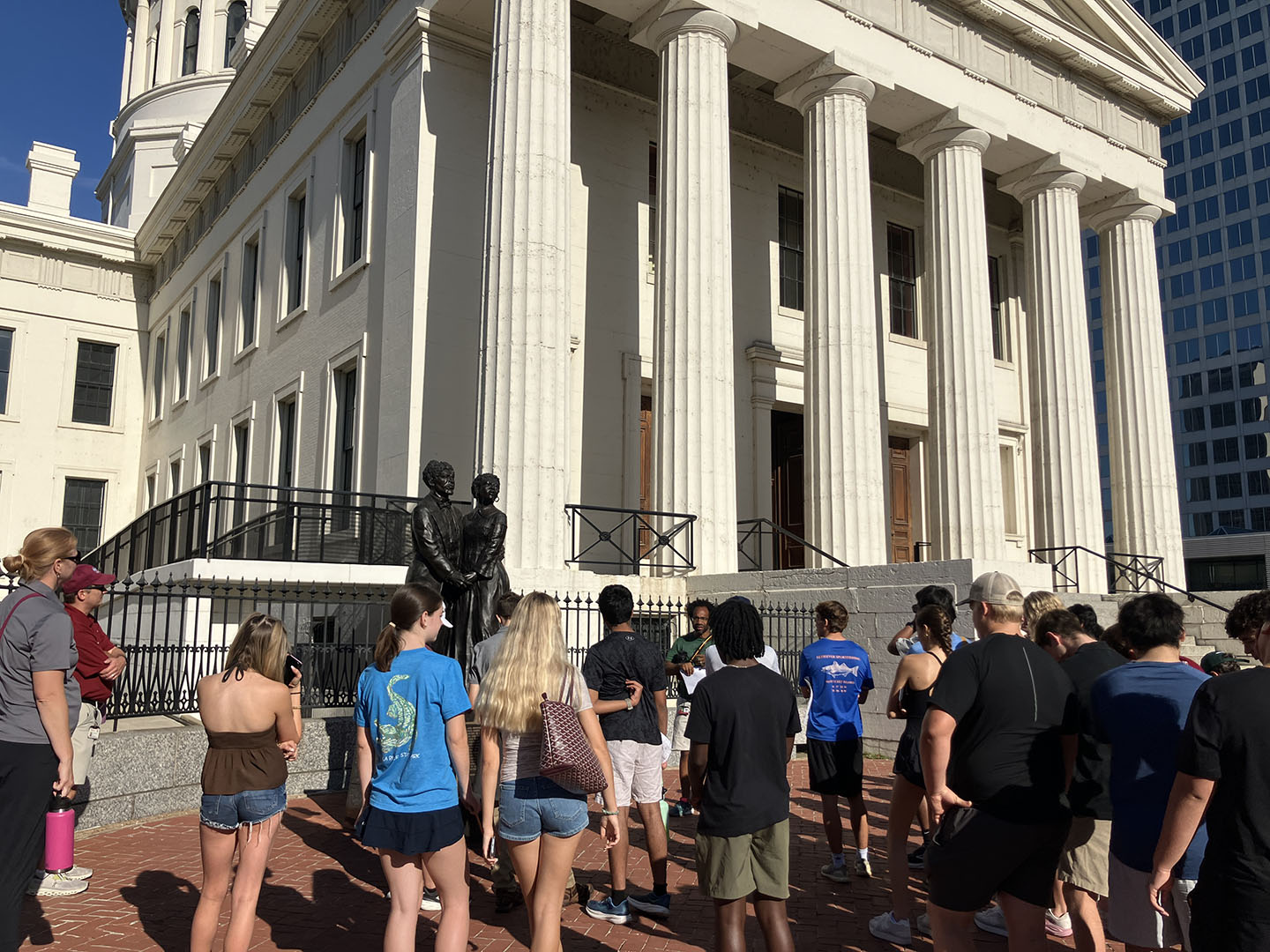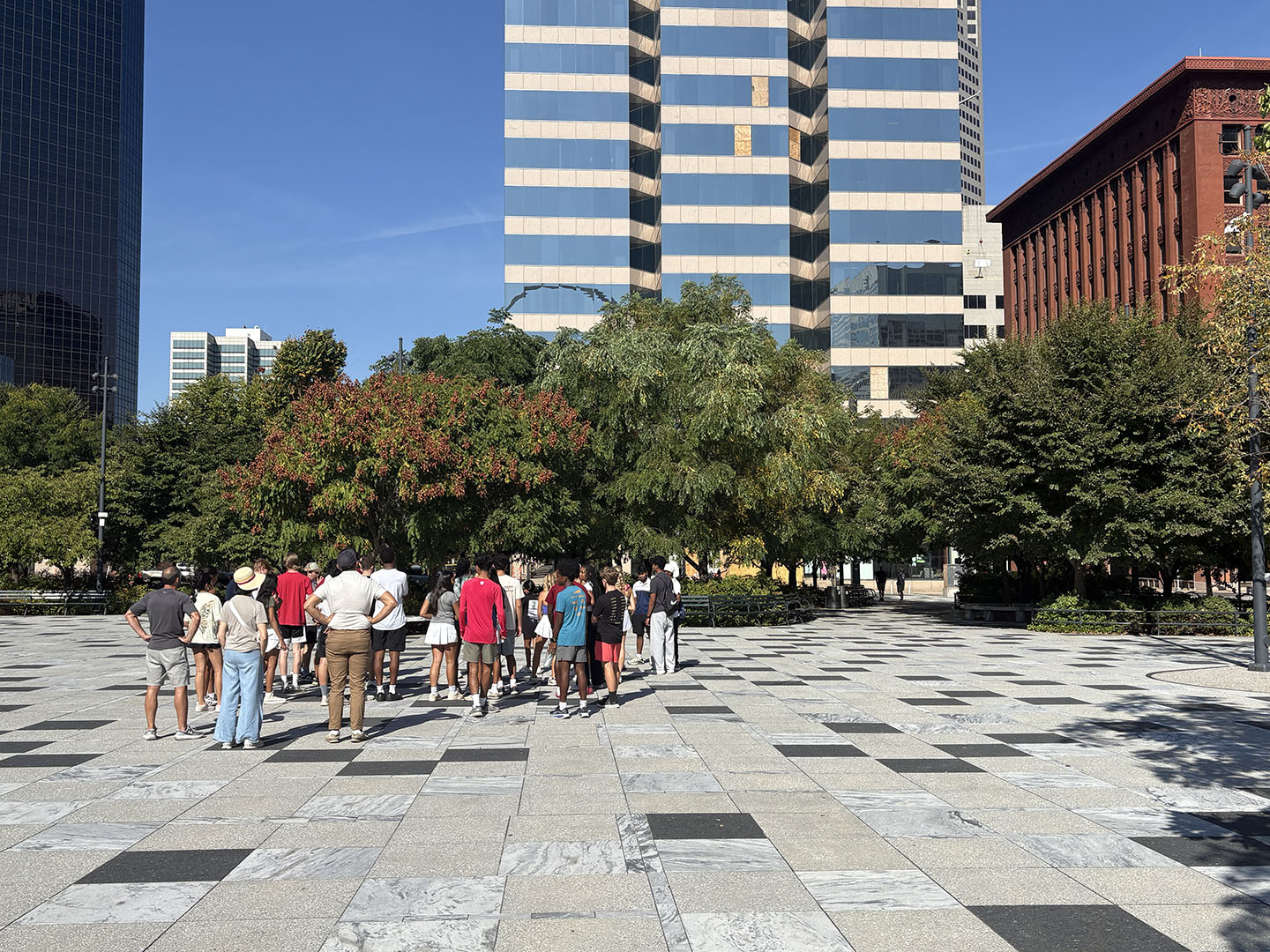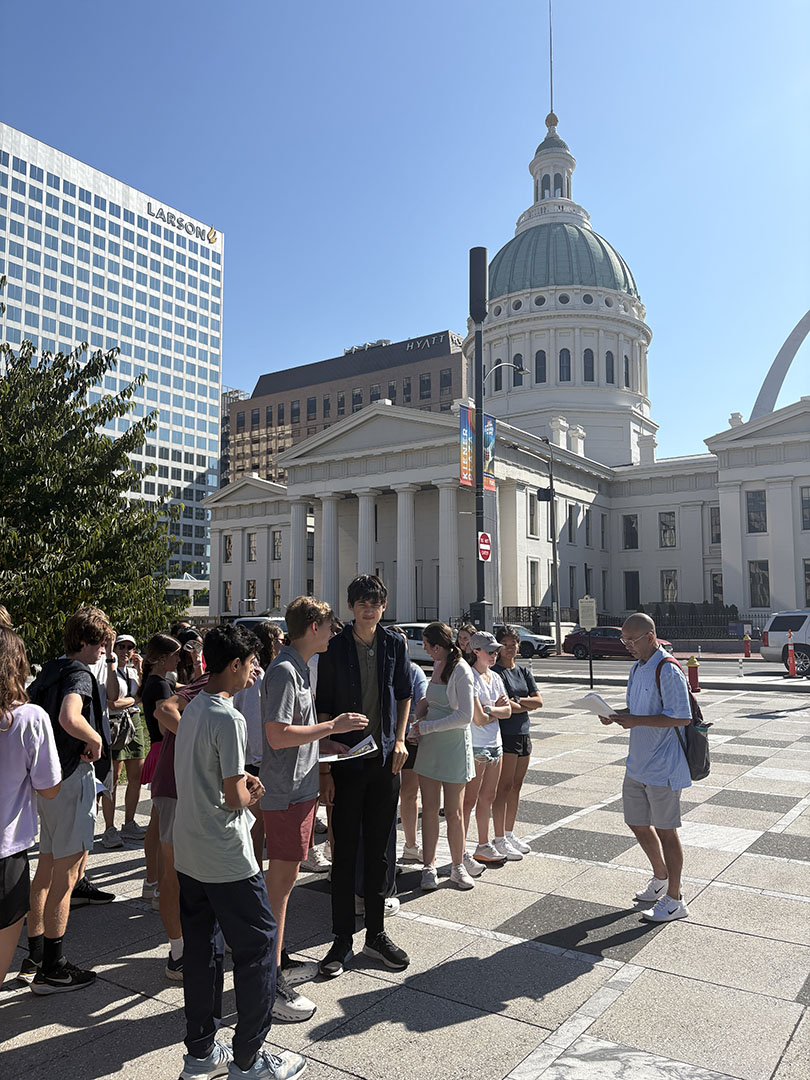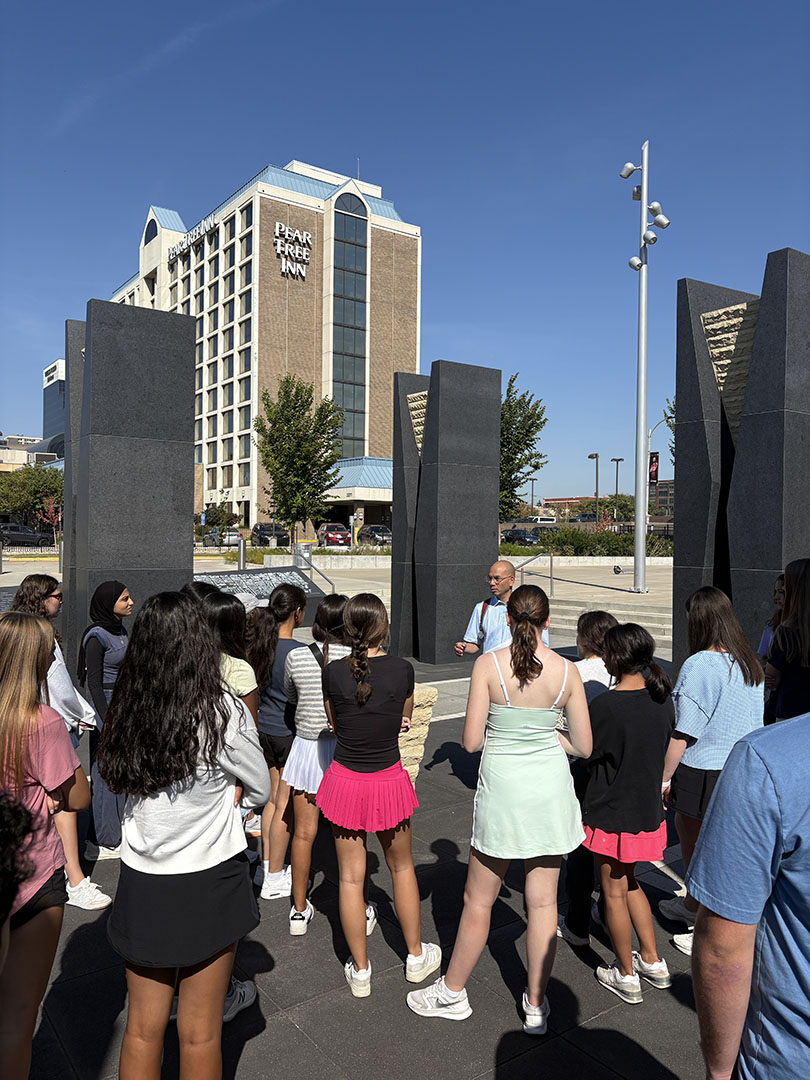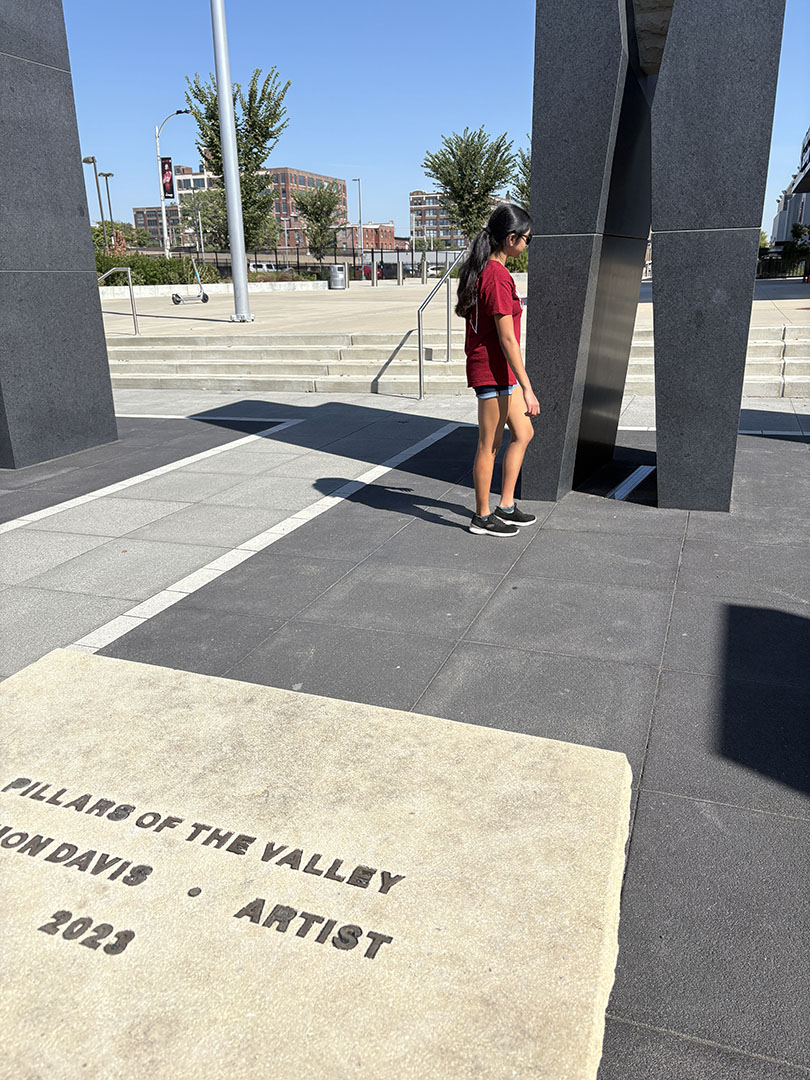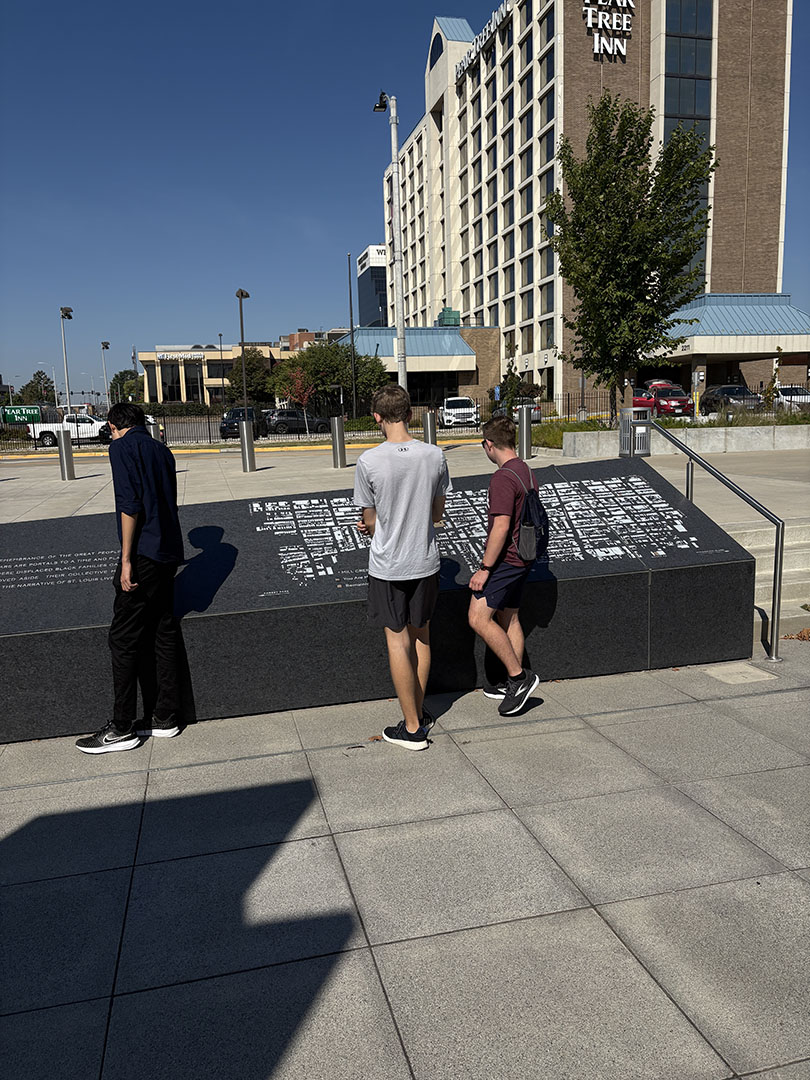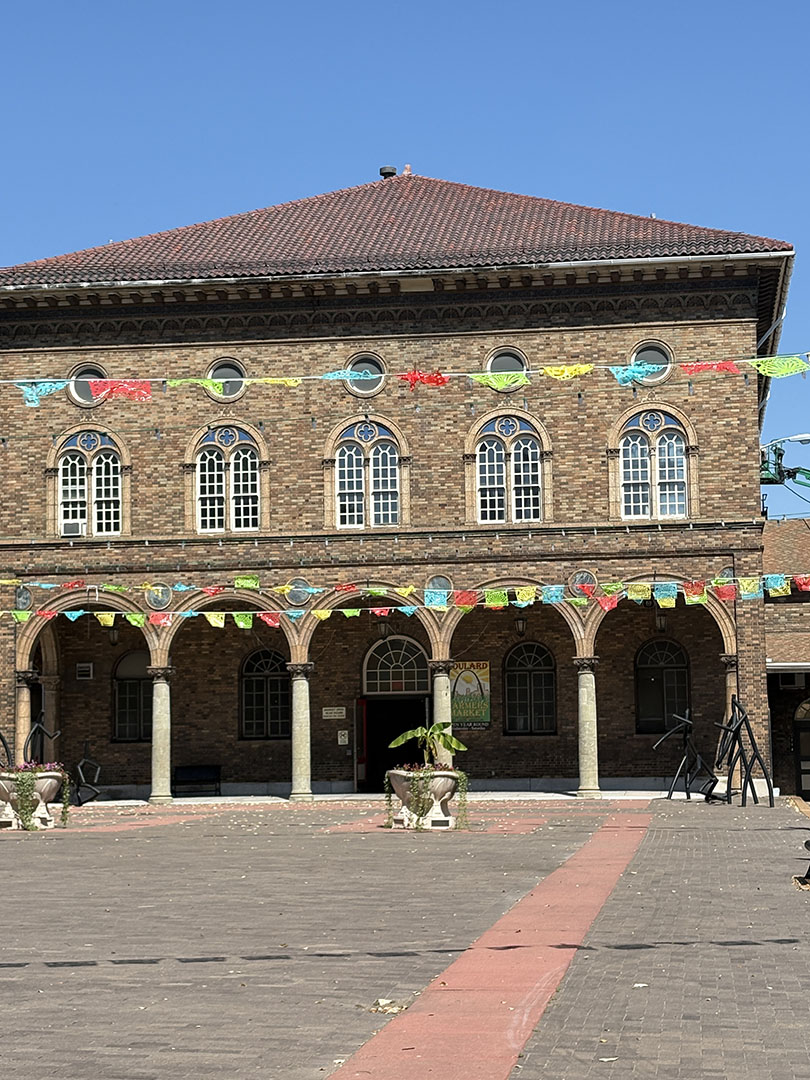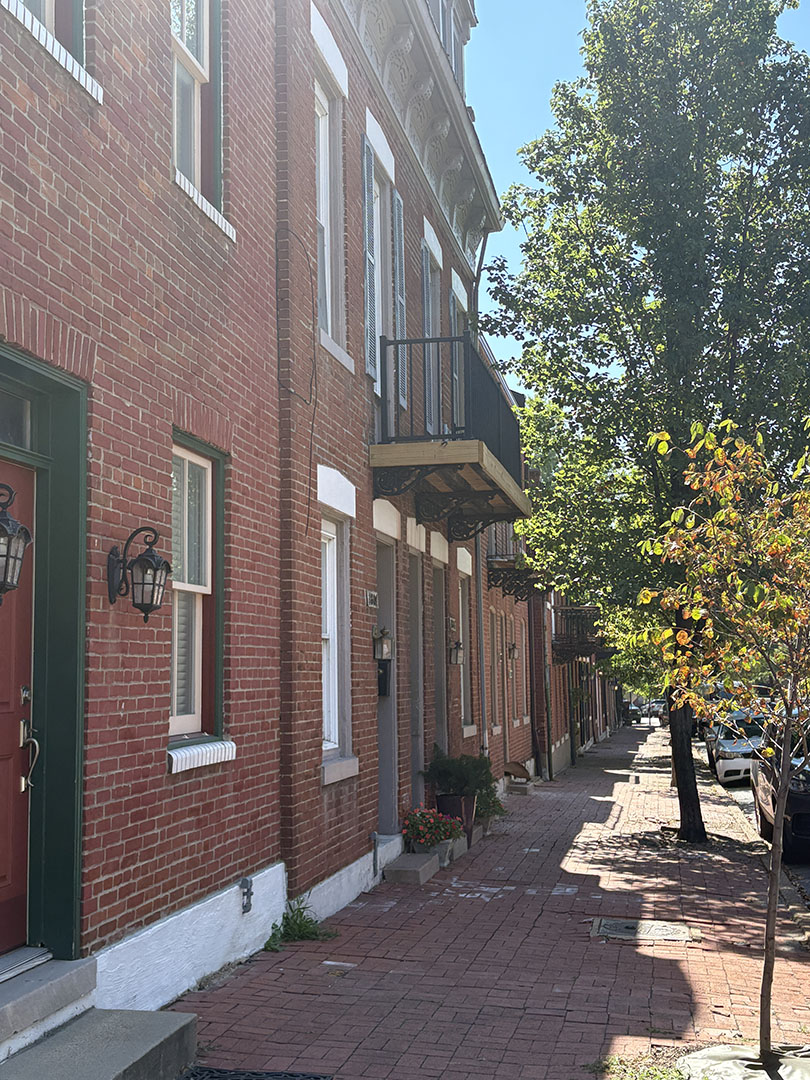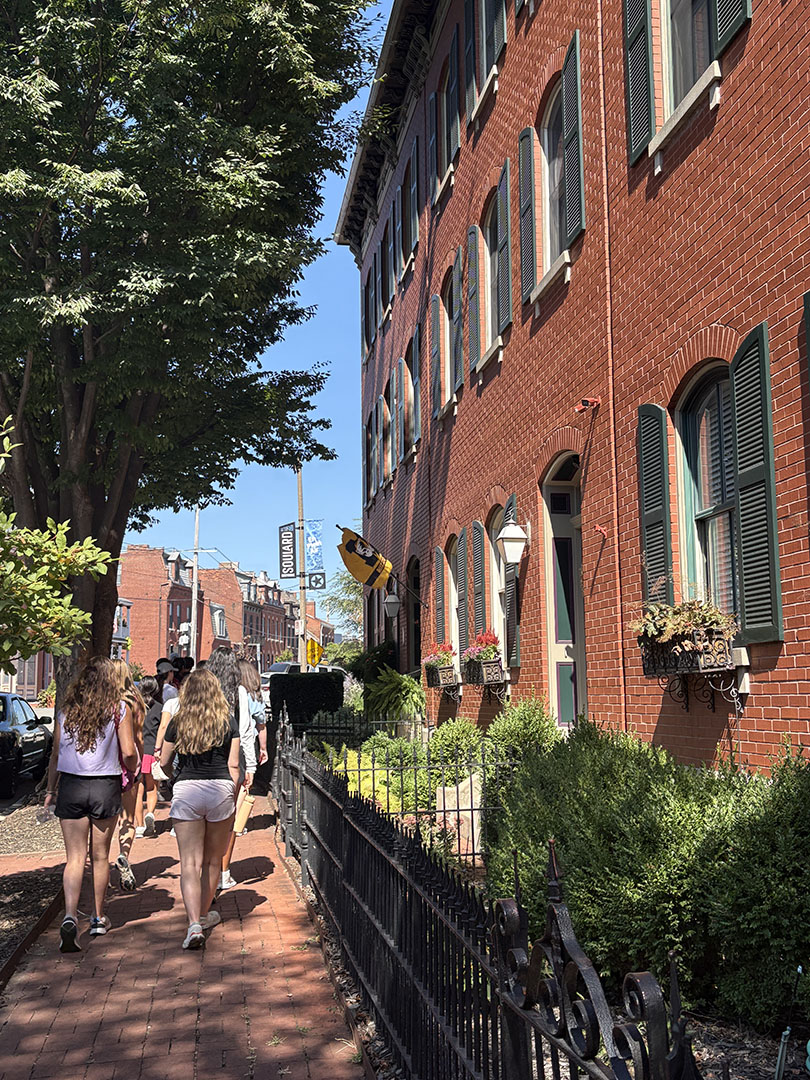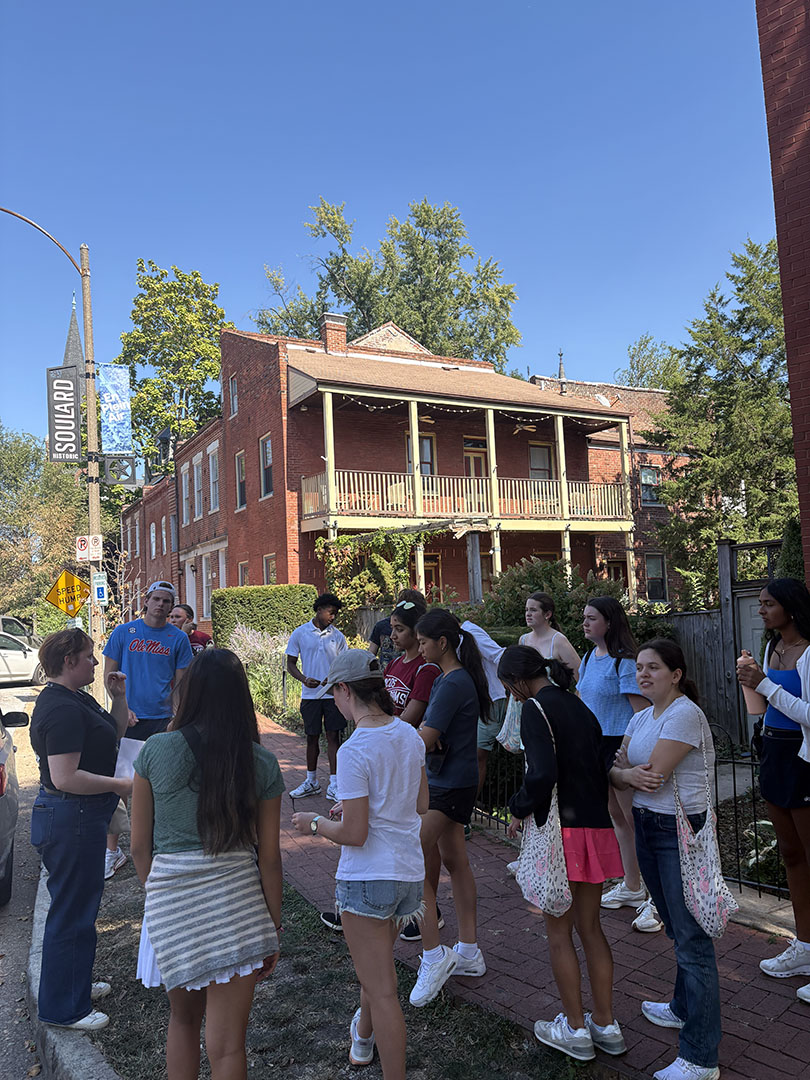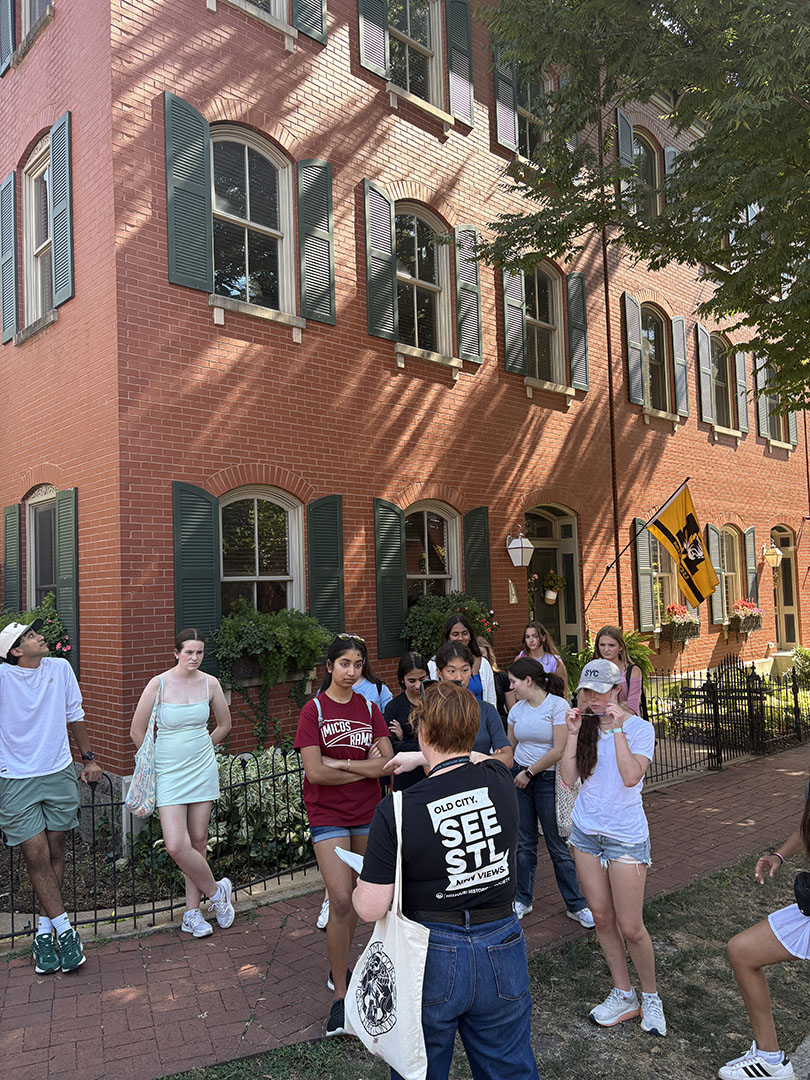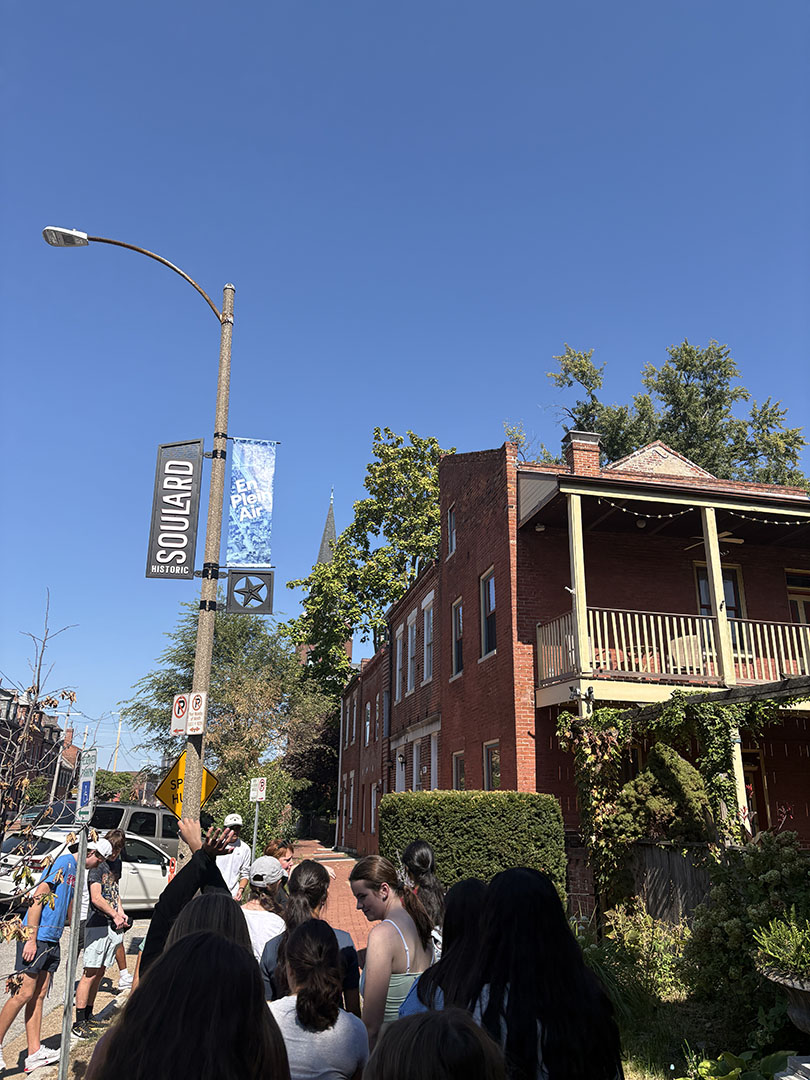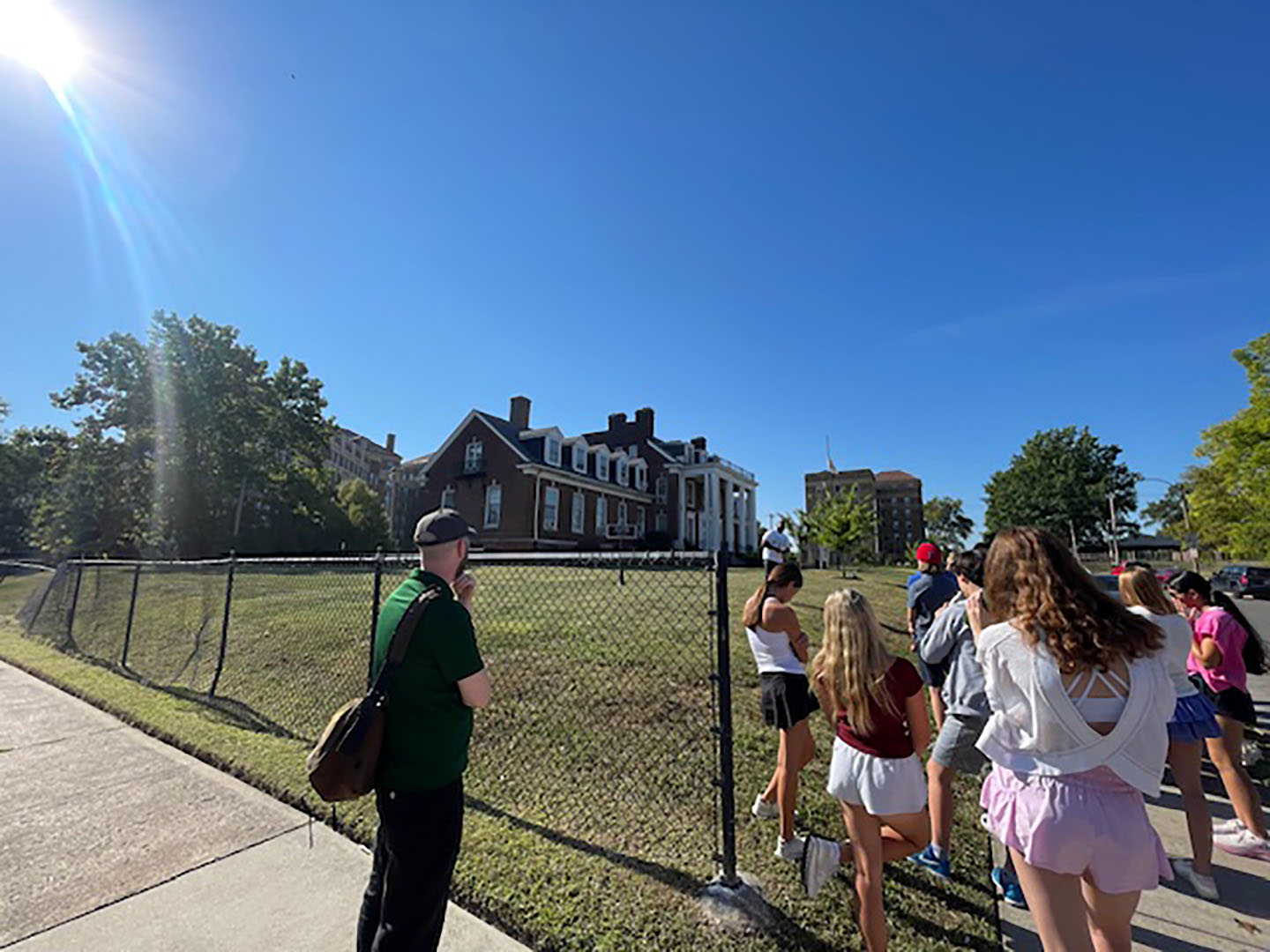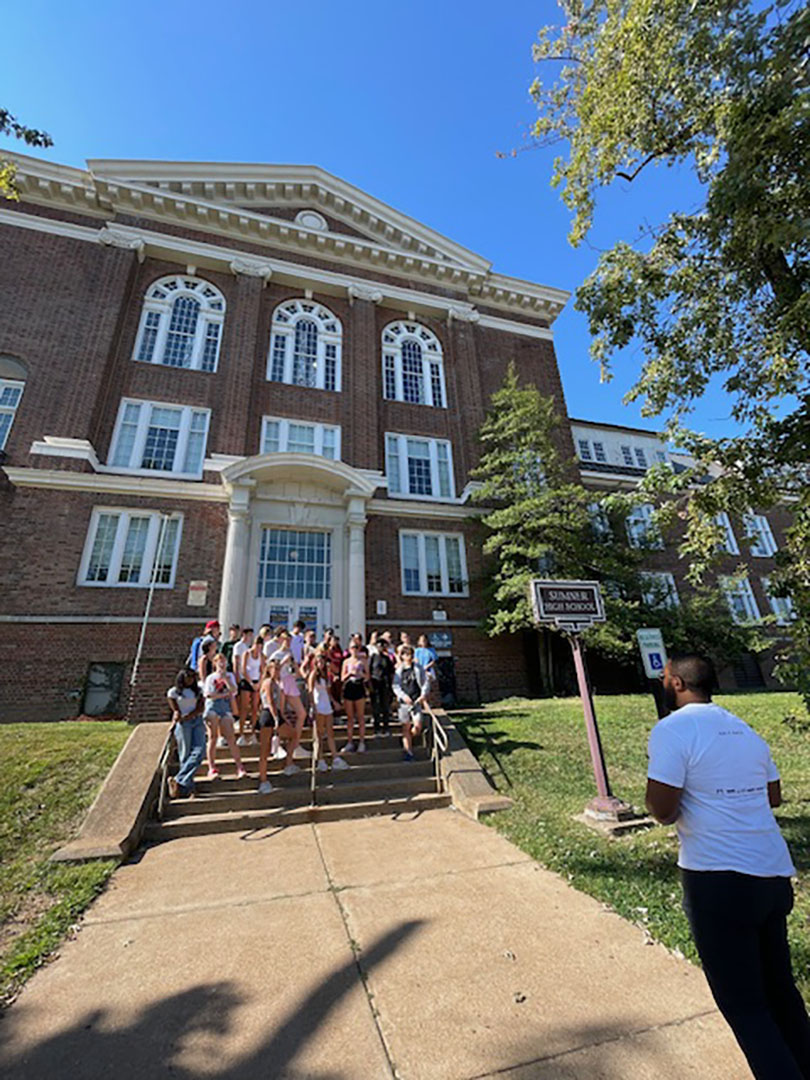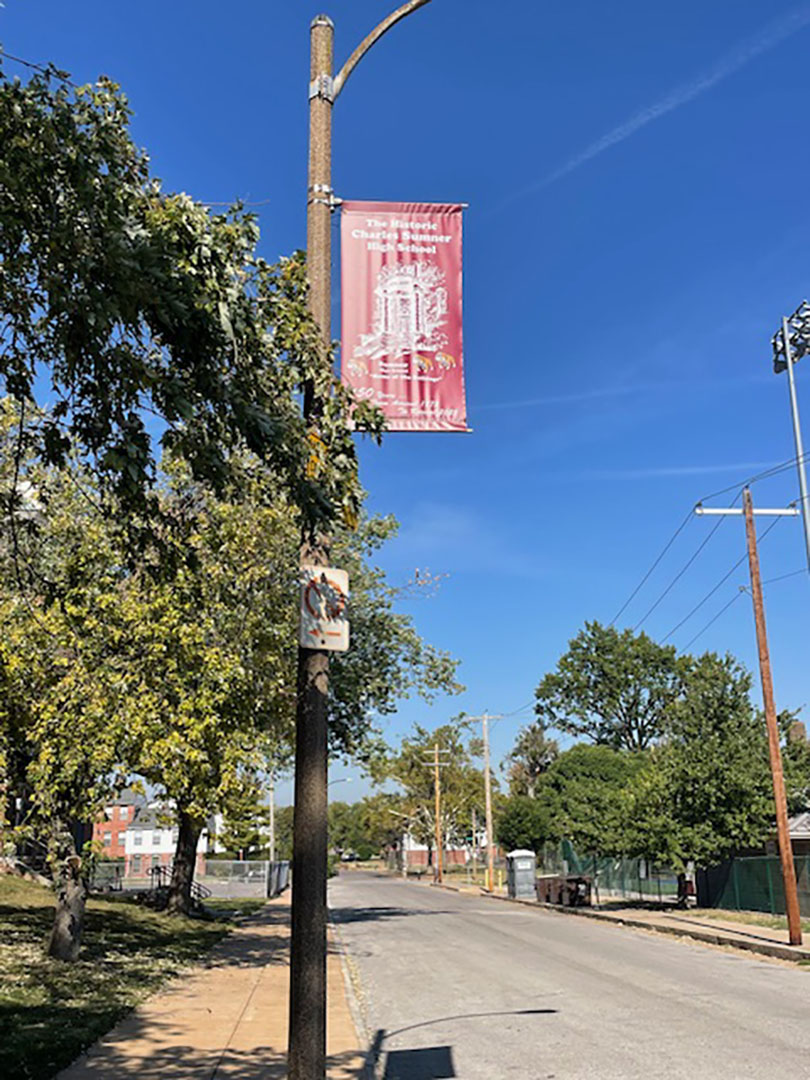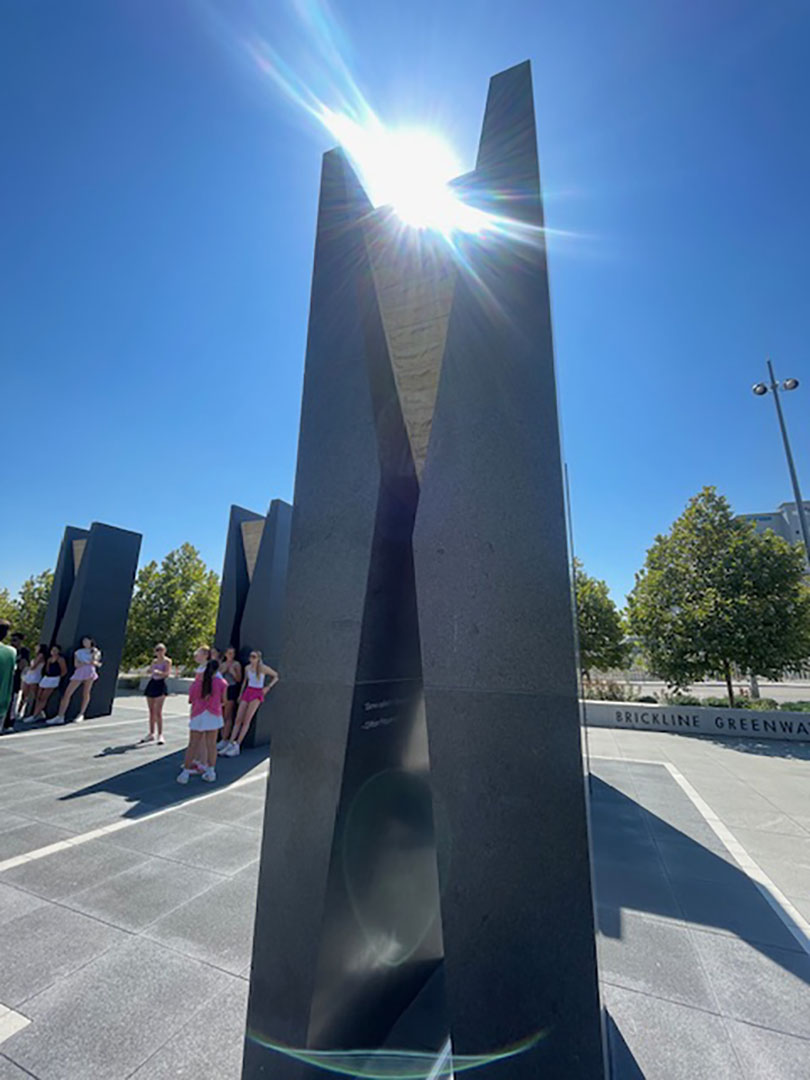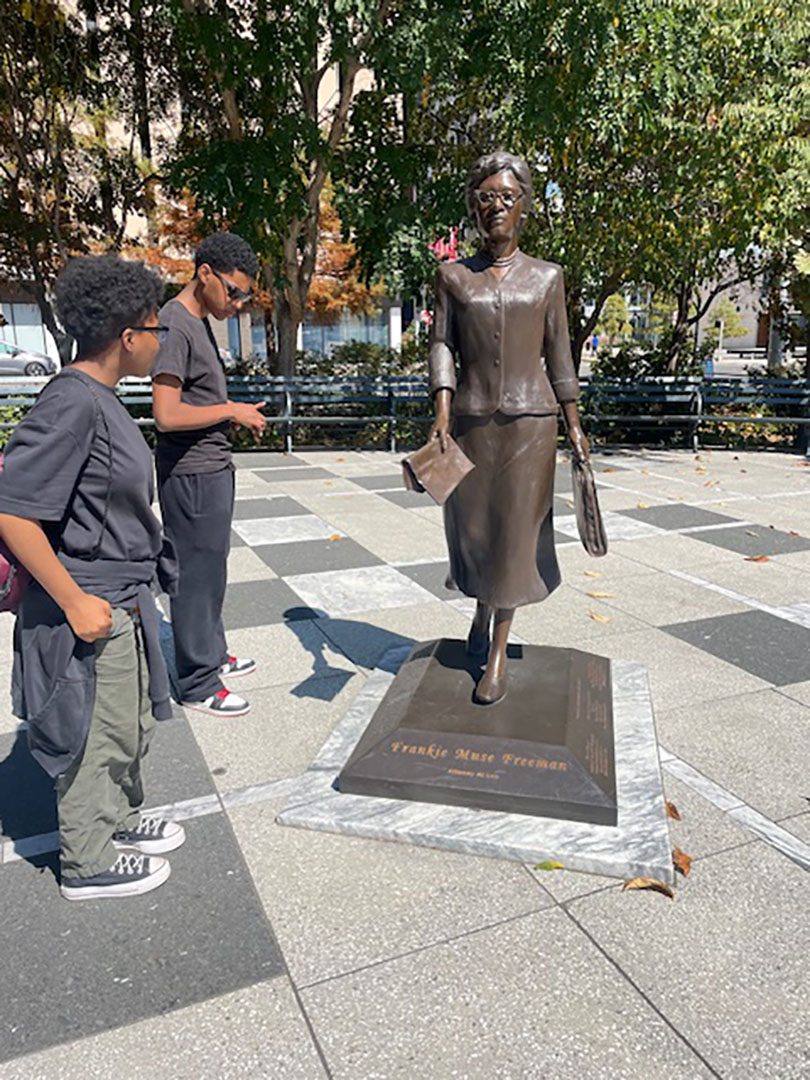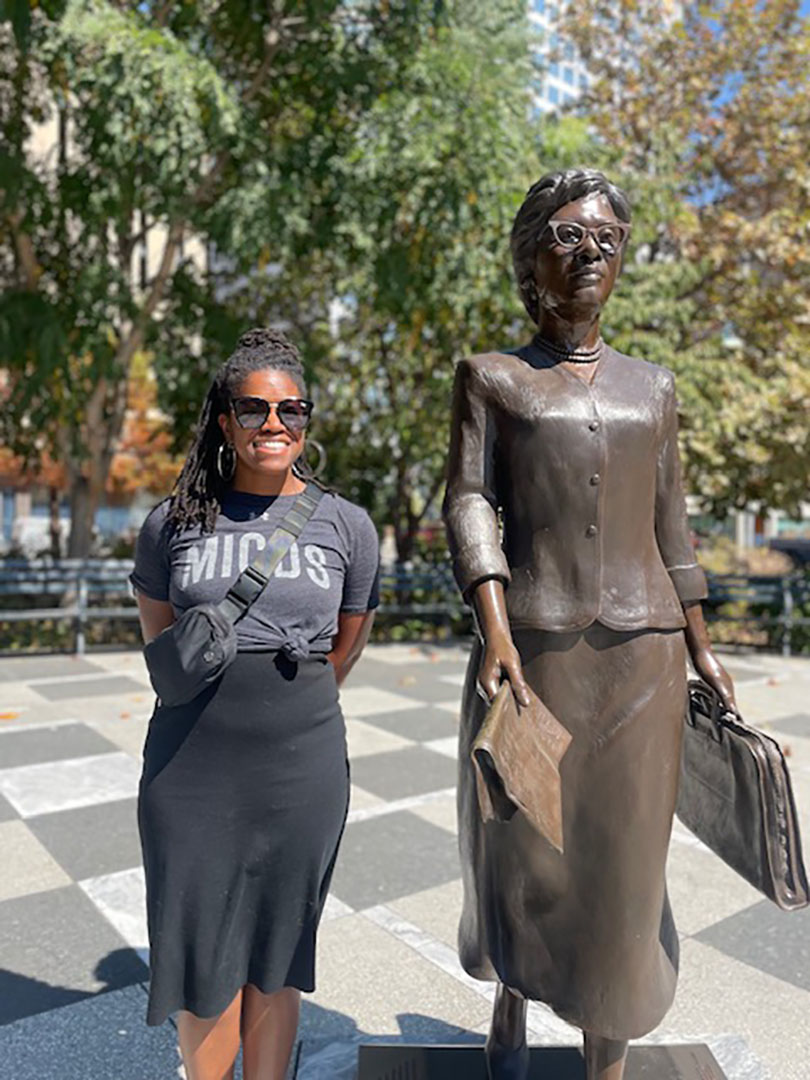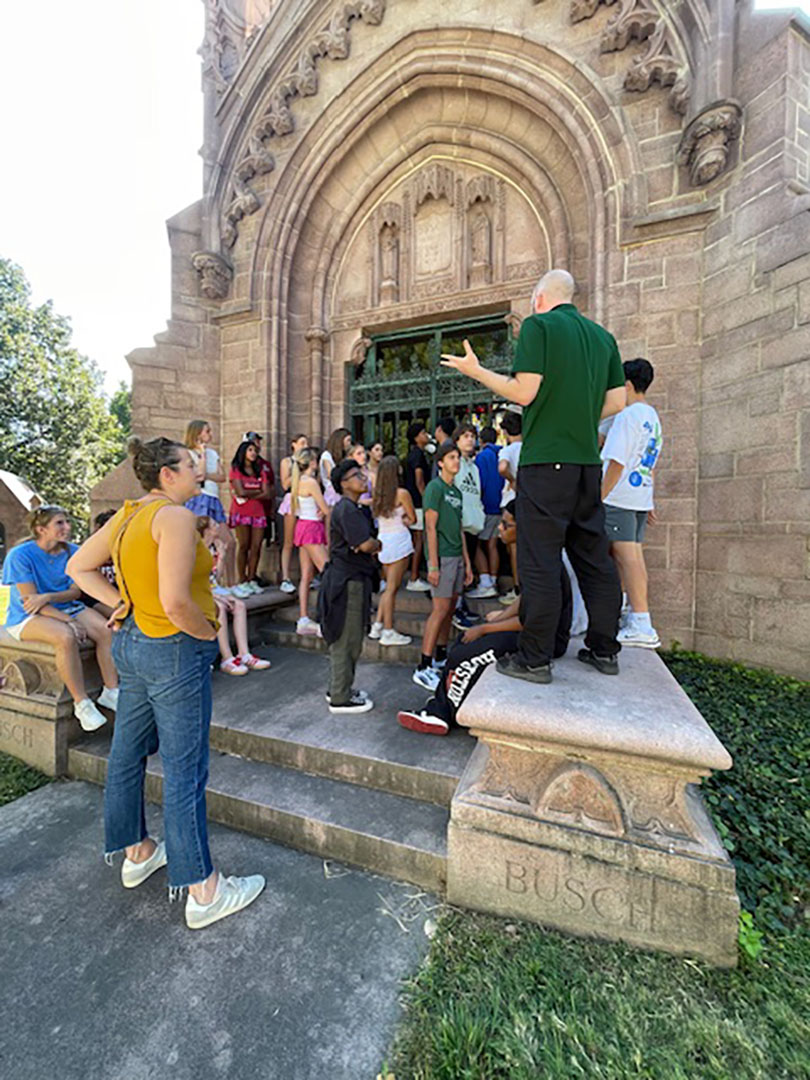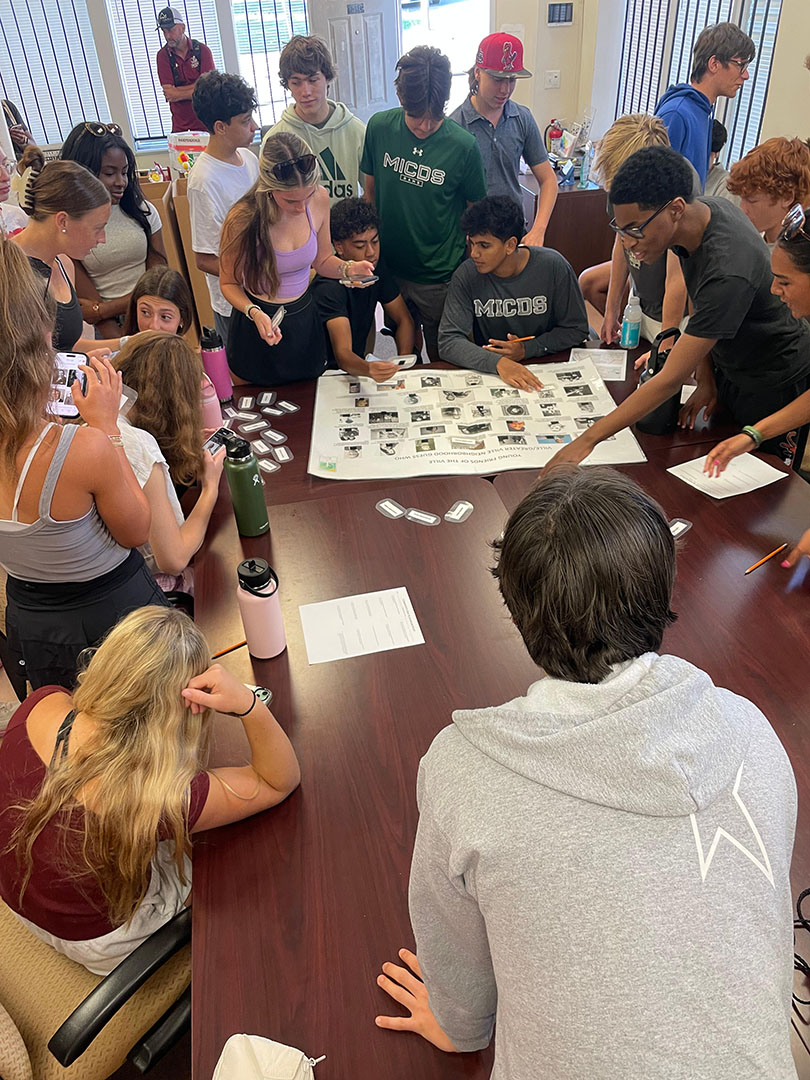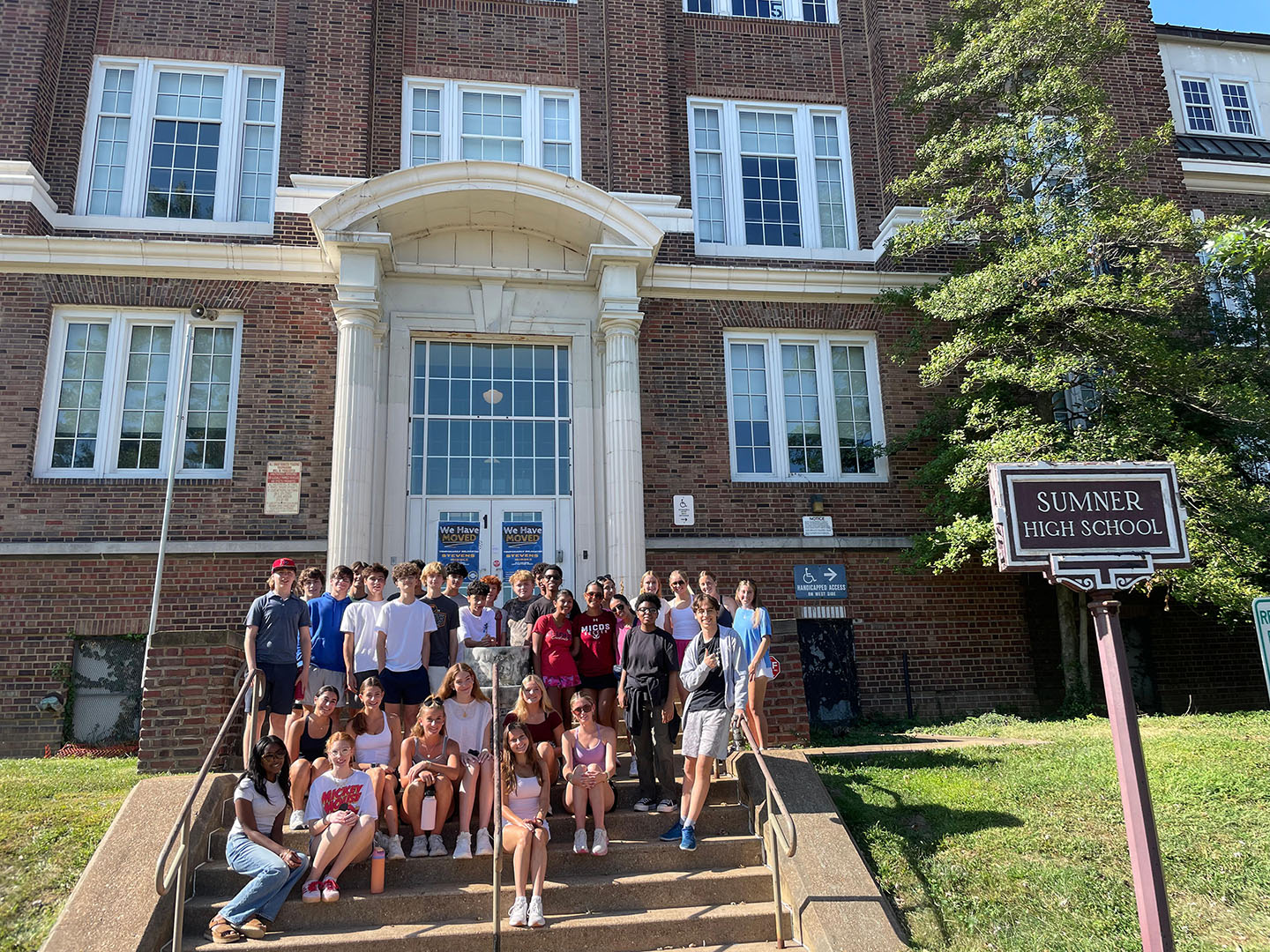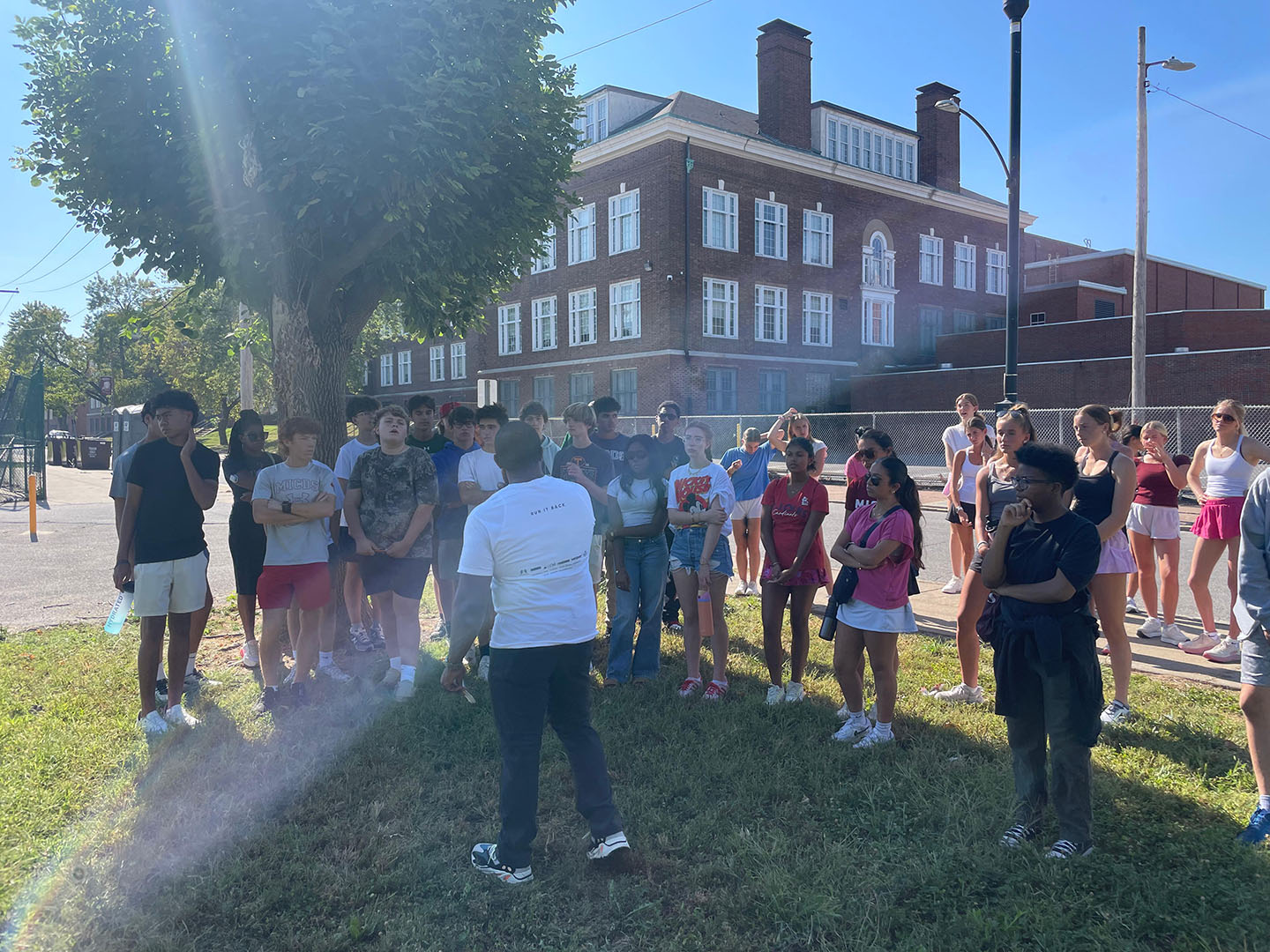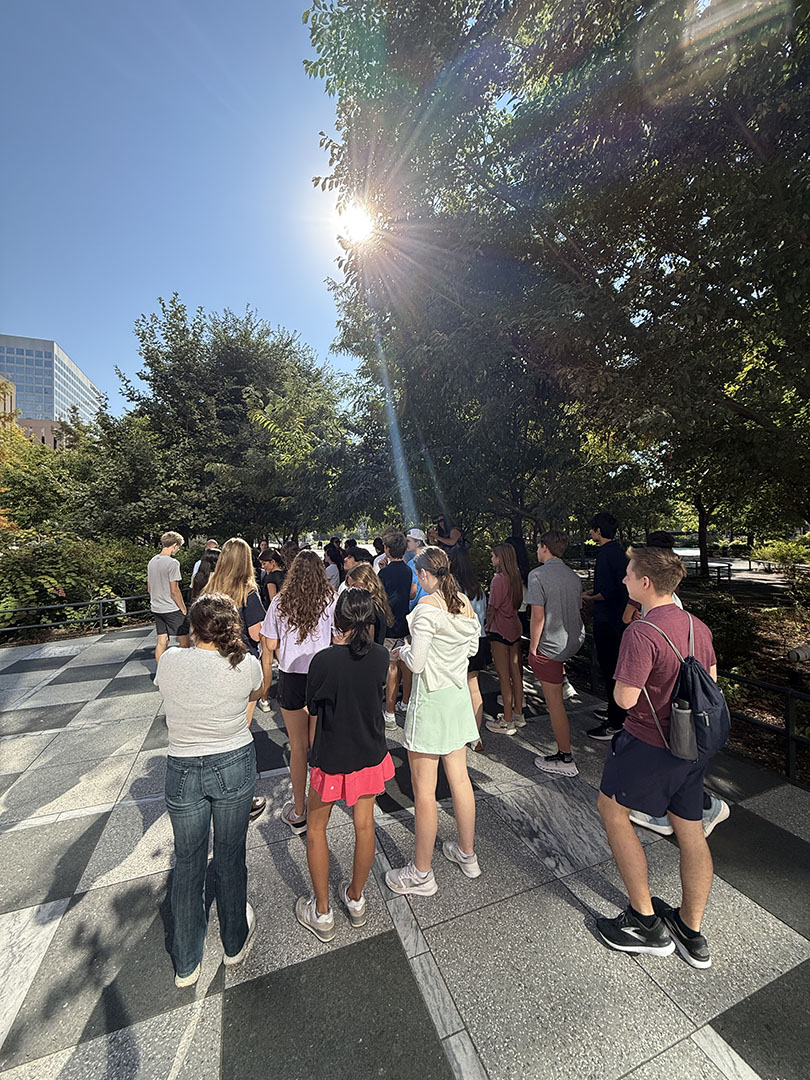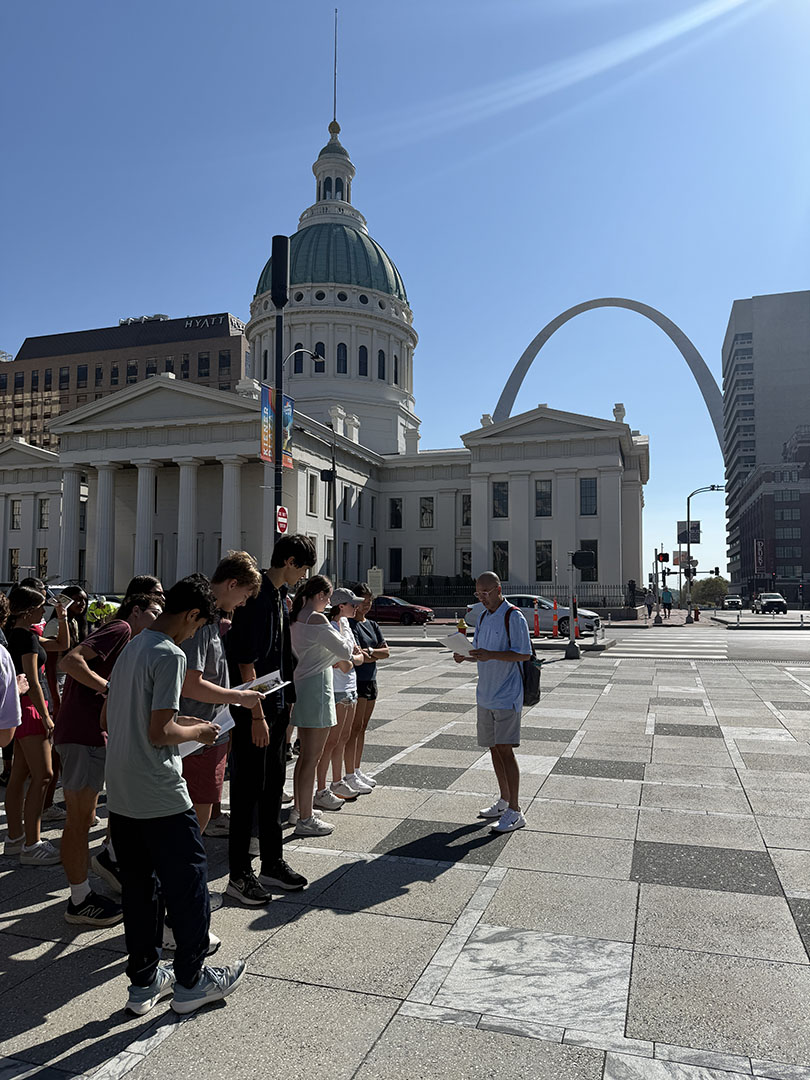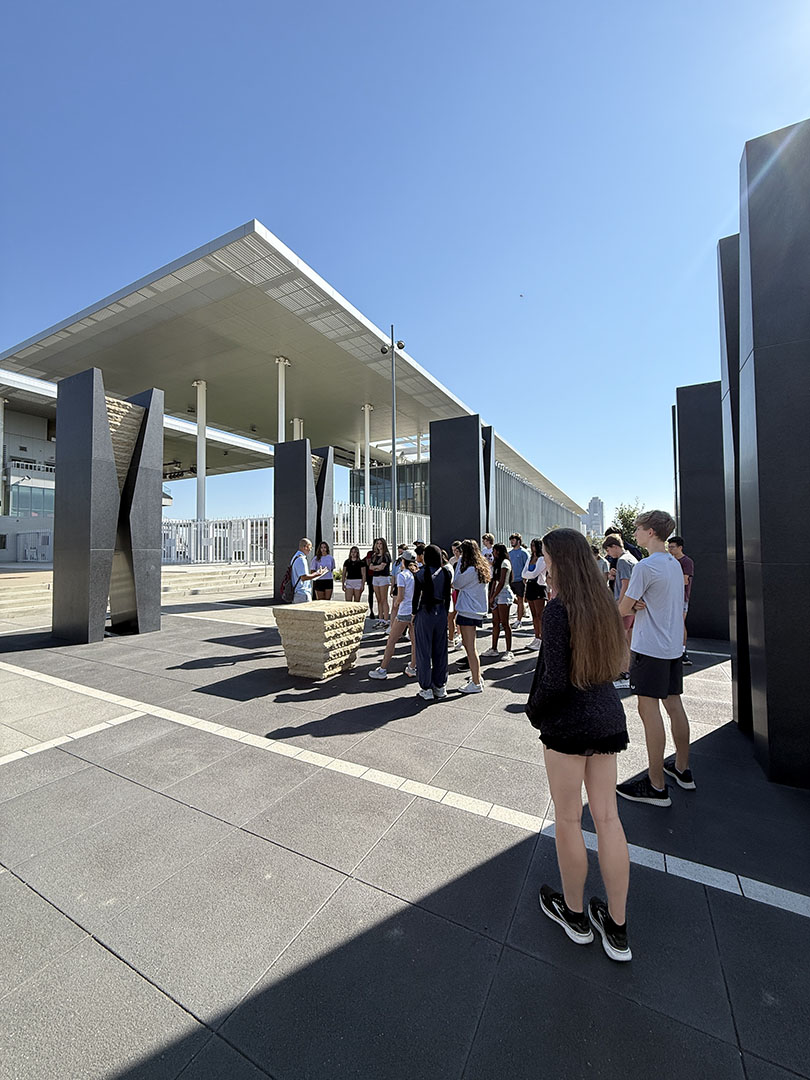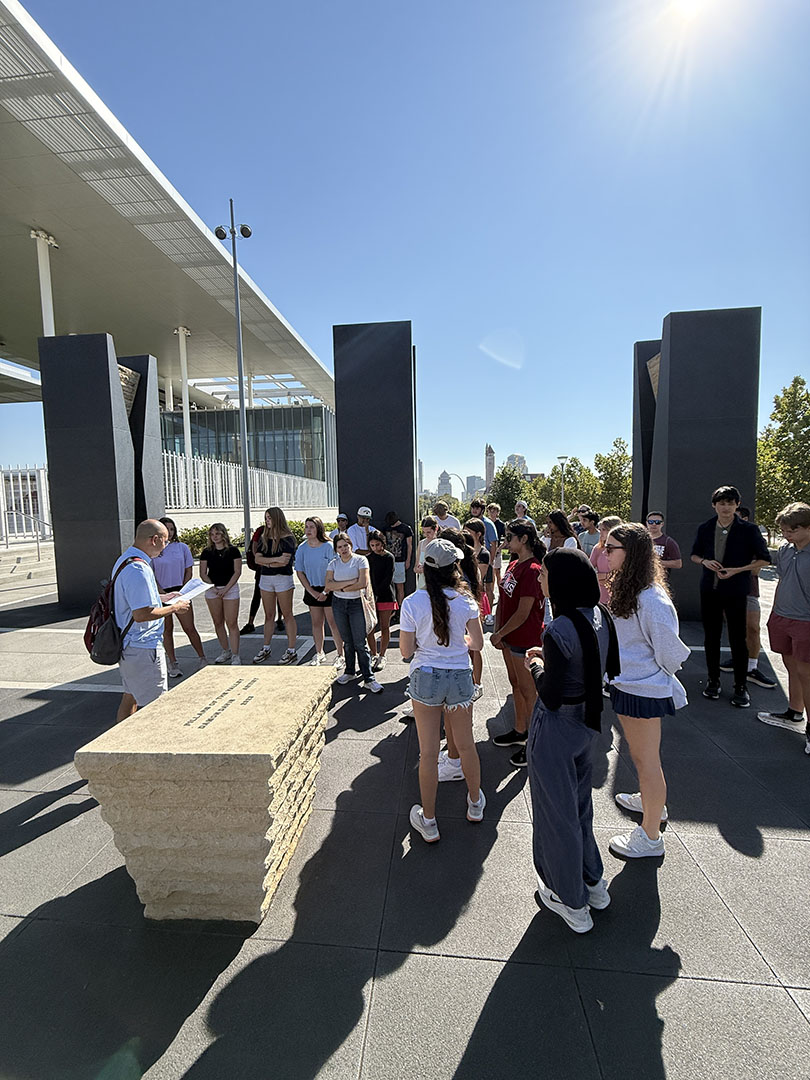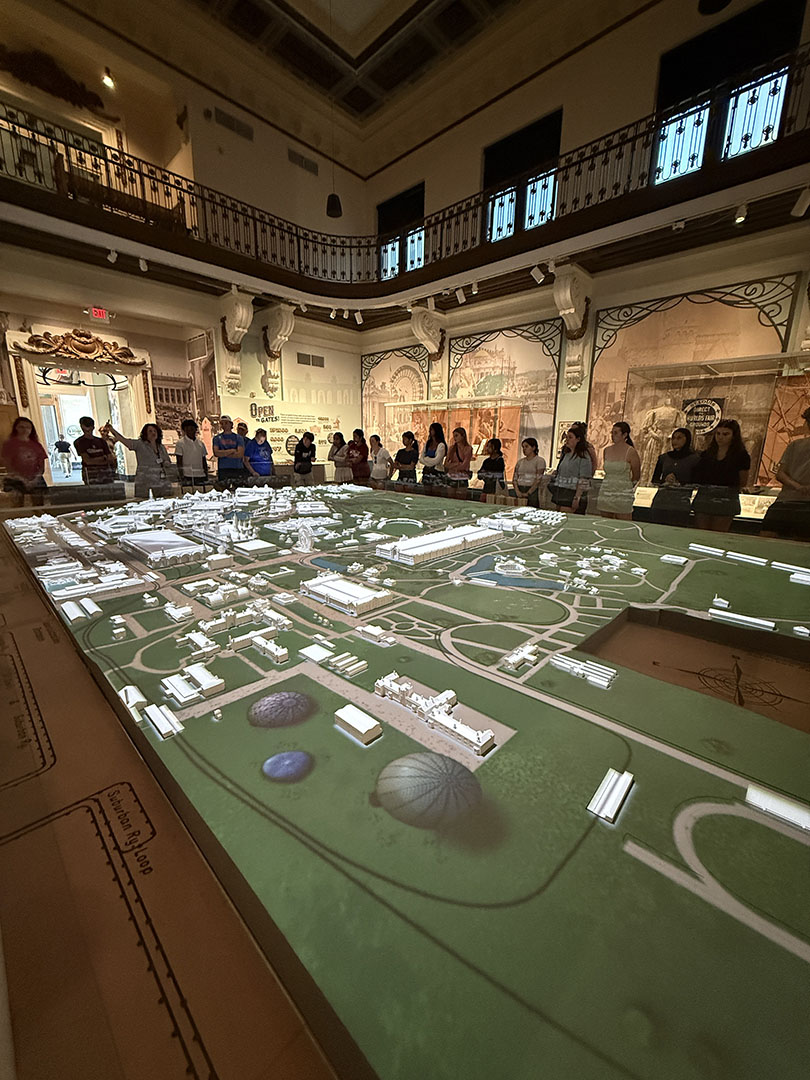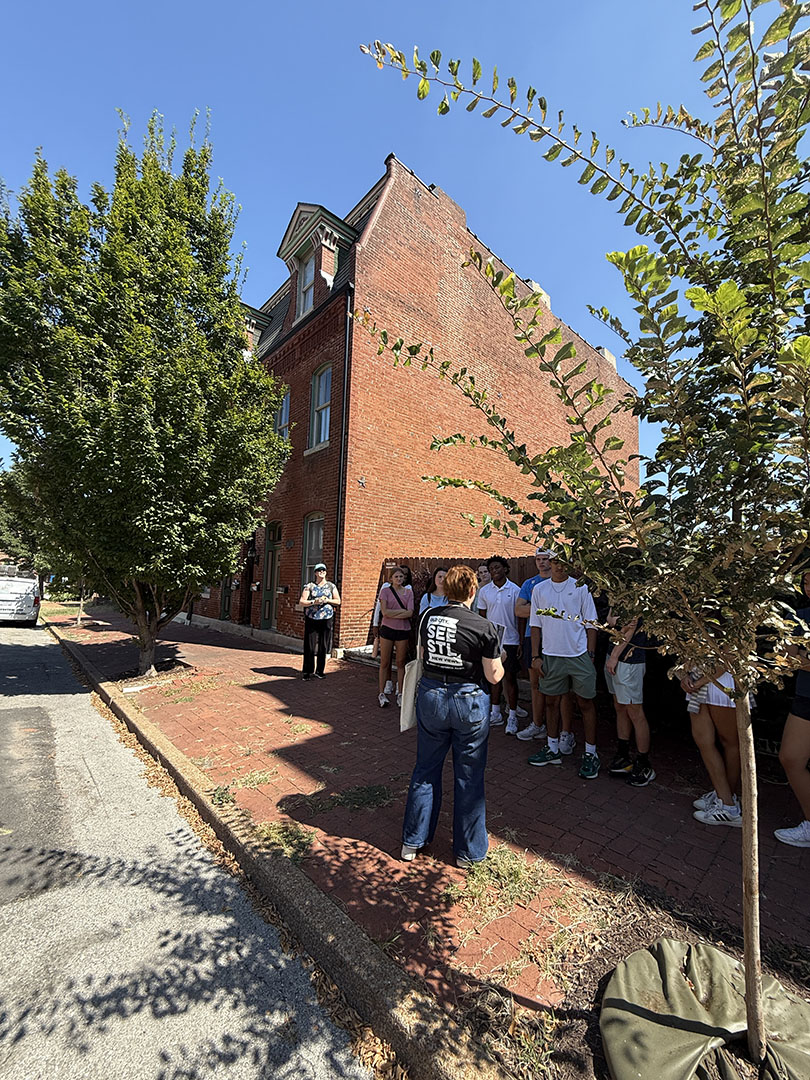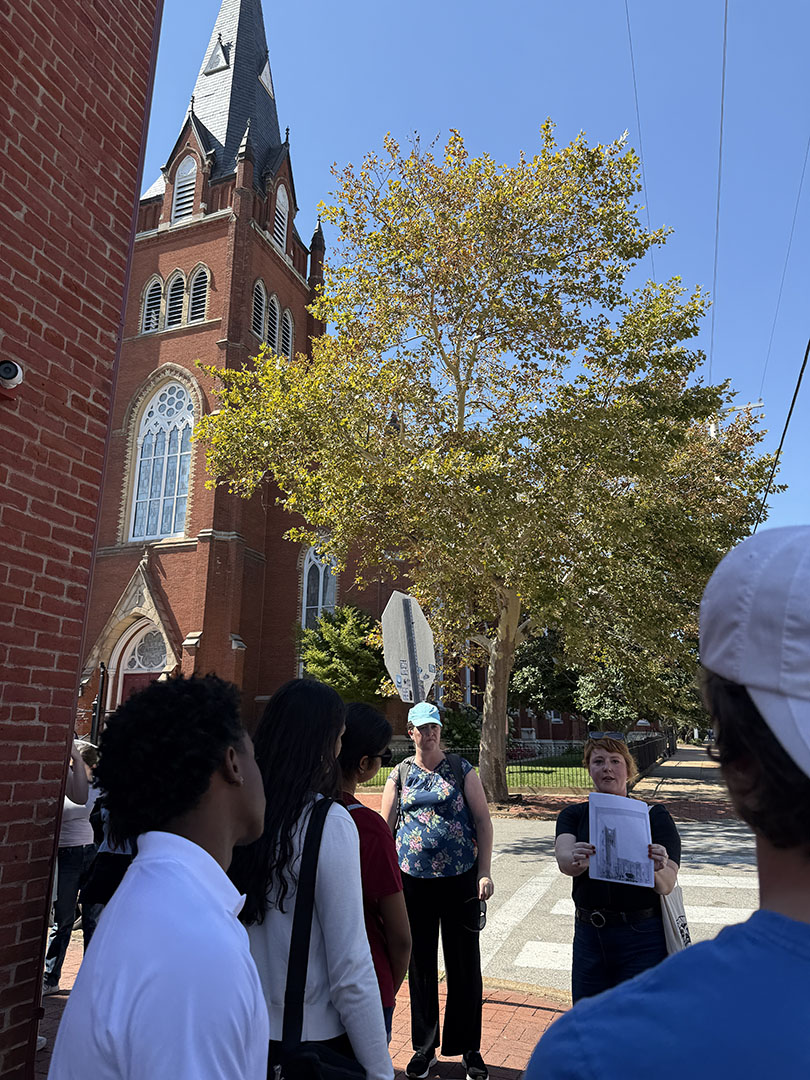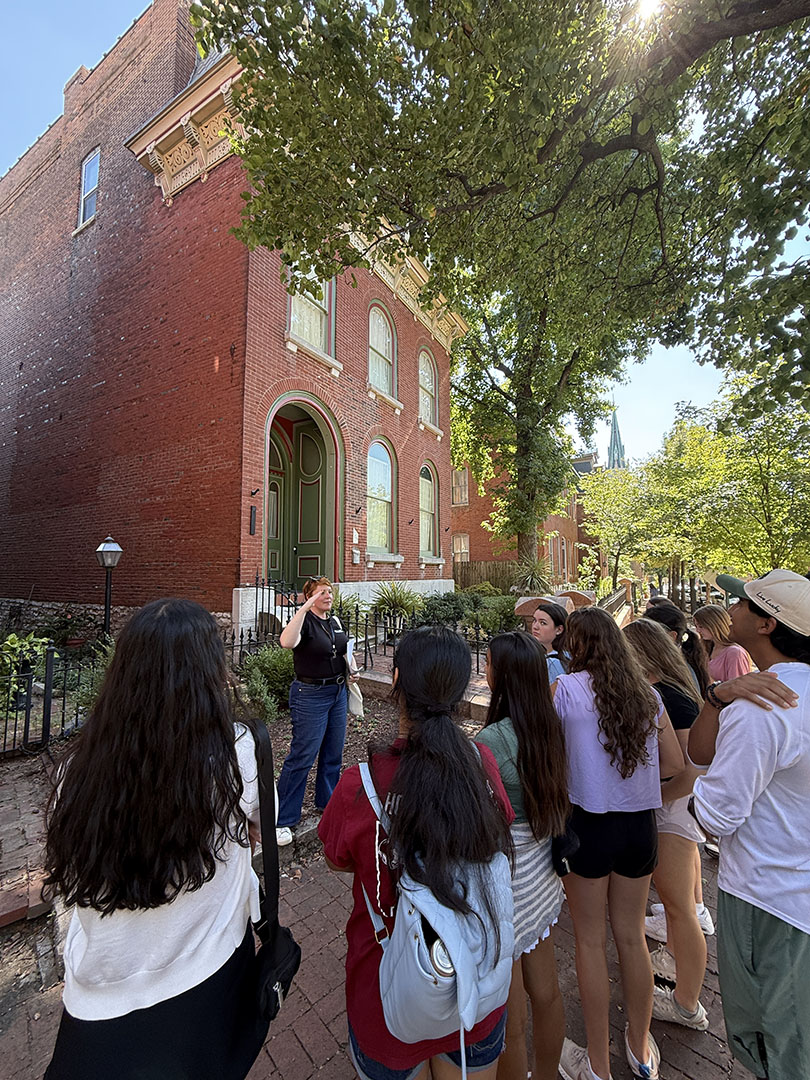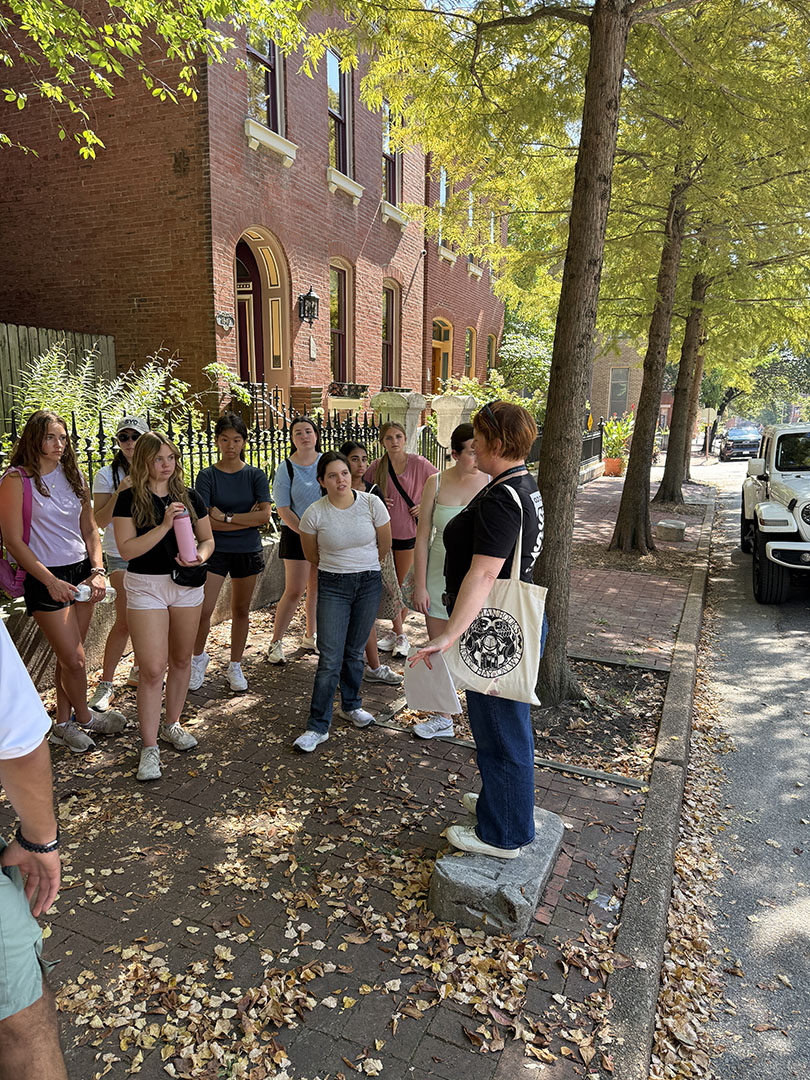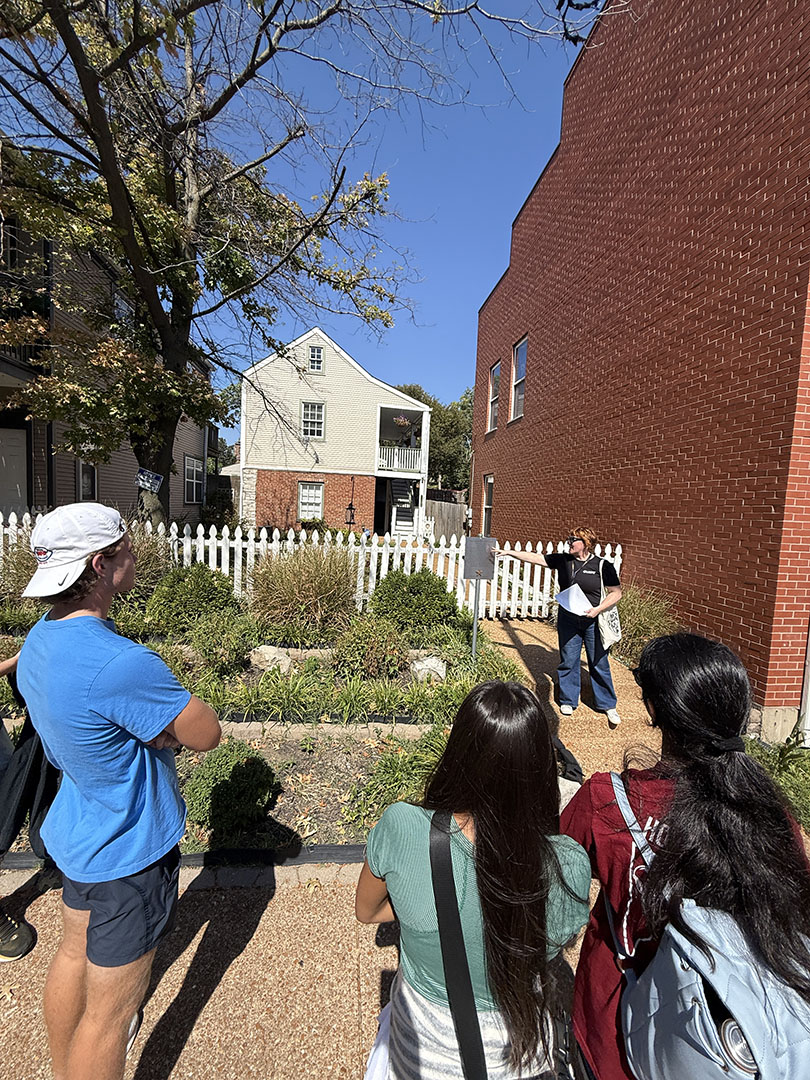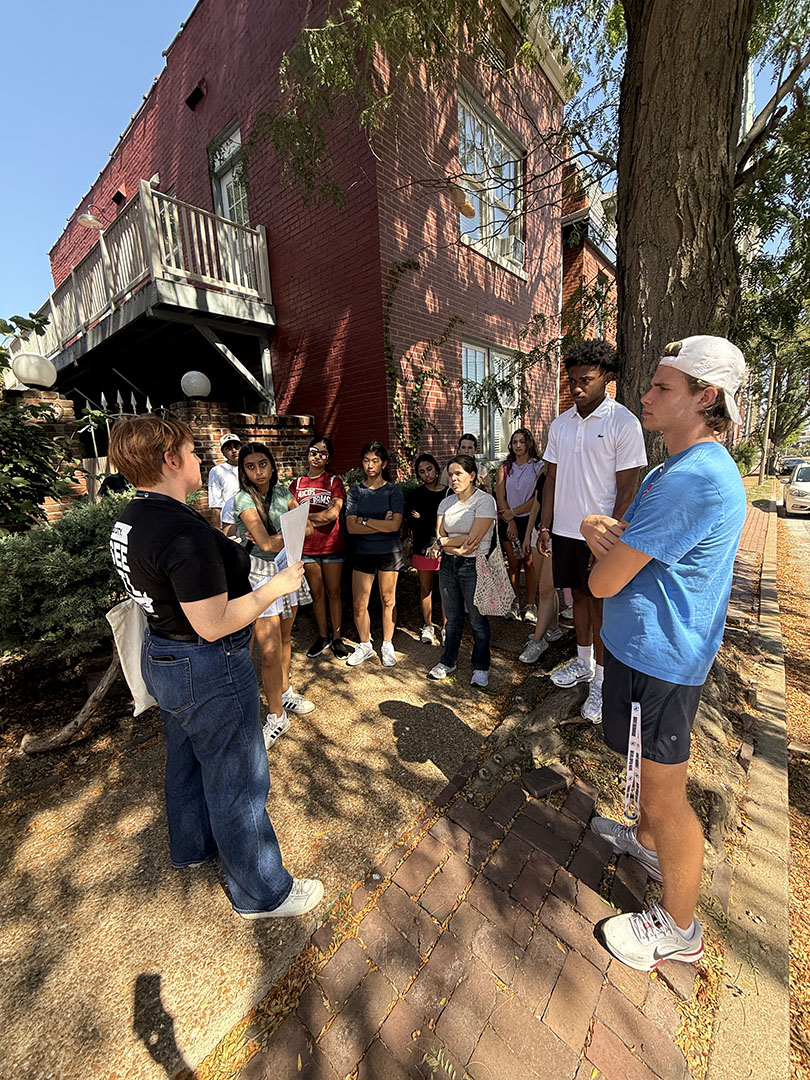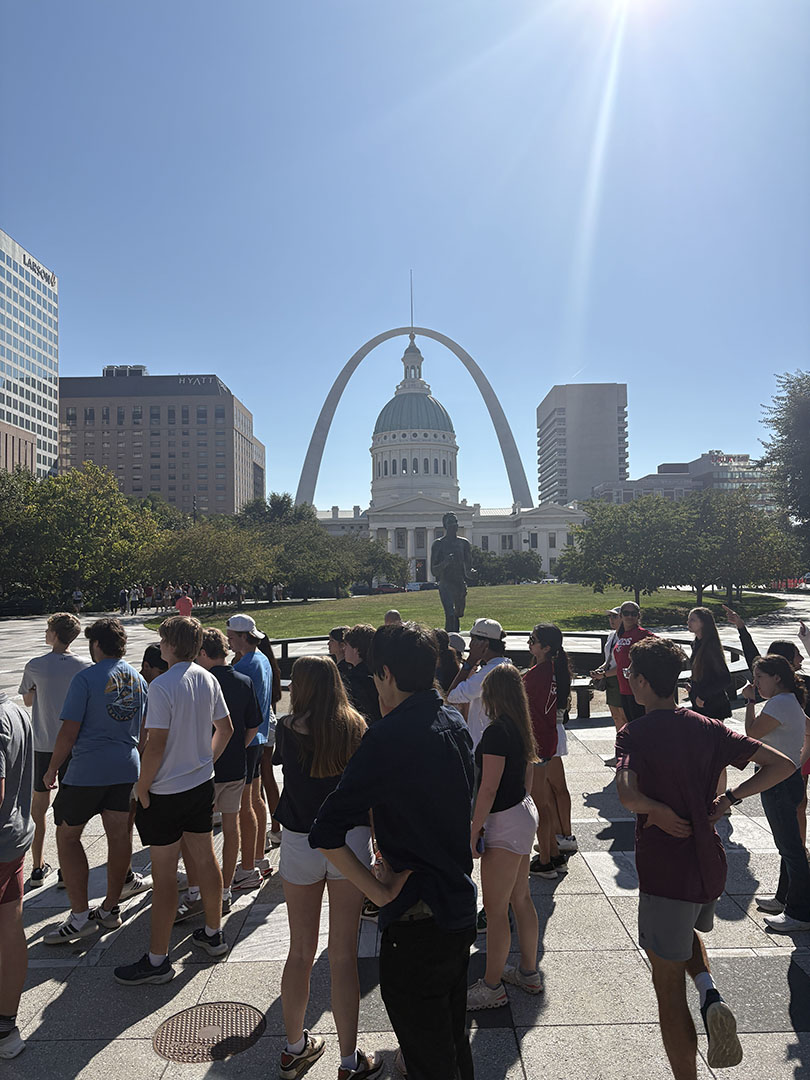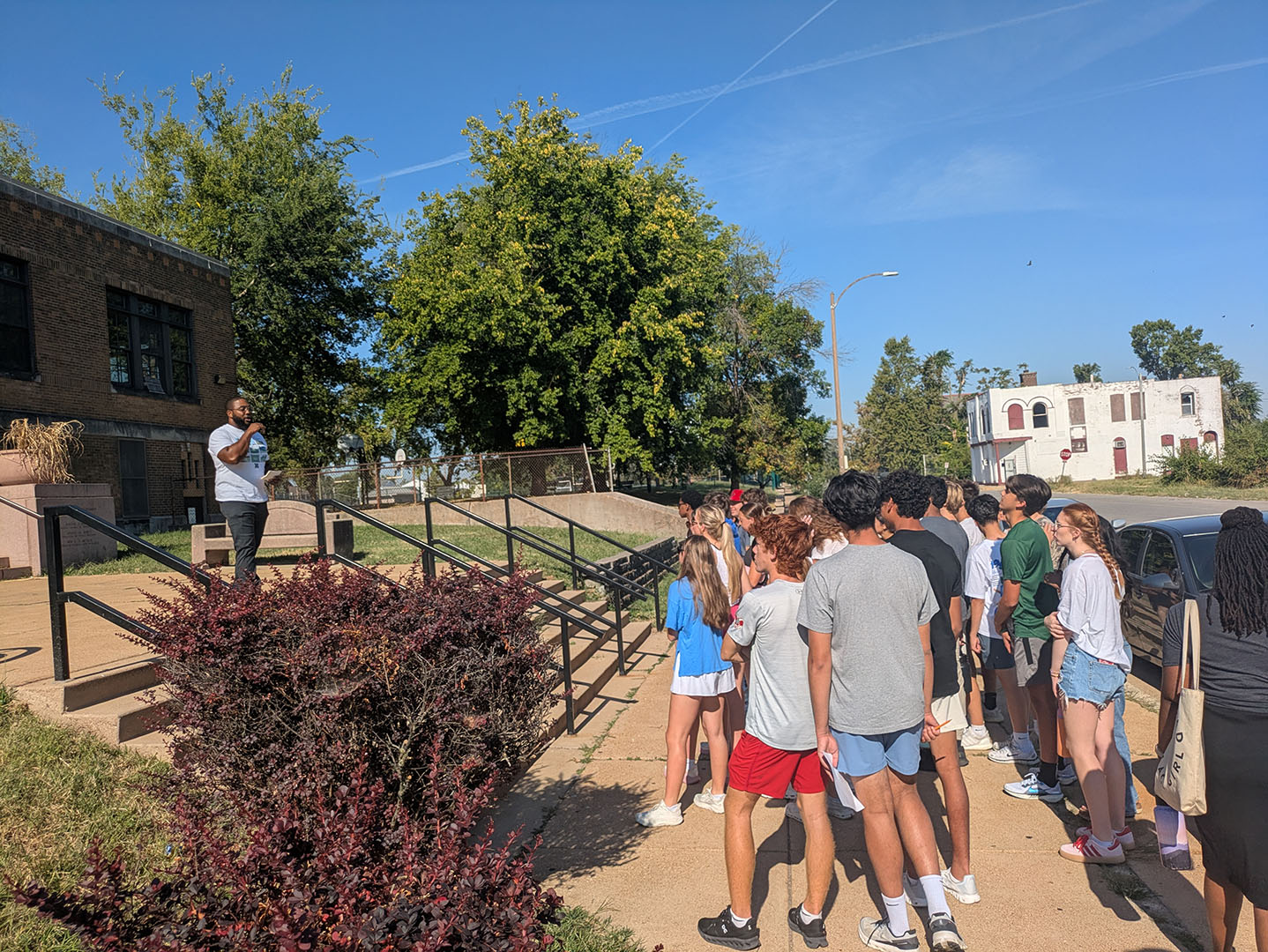The Class of 2027 enjoyed tours around St. Louis on Community Day, Wednesday, September 17. These students are all taking The History of St. Louis this semester and are engaging with our community in many ways.
The students, their history teachers, and class advisors saw history brought to life beyond the classroom. The course strives to help students understand the larger community and the communities in which they live to become more active and engaged citizens. The course also aligns with our School’s Mission as students aspire to “meet the challenges of this world with confidence and embrace all its people with compassion…” By learning the history of our own city, students are prepared to better understand the past of other major metropolitan areas around the country.
On Community Day, every 11th grader participated in three tours. They experienced a bus tour designed and led by the History of St. Louis teachers, visiting Bellefontaine Cemetery, Fairgrounds Park, the National Geospatial-Intelligence Agency site, the former Pruitt-Igoe site, St. Louis Place, Citygarden/Keiner Plaza/Downtown, CityPark, and more.
Daniel Kuhlman ’27 said, “My favorite part of the day was visiting the Bellefontaine Cemetery. It was cool seeing all the different graves and mausoleums of different important families. Some notable graves we saw were those of the Busch Family, the Lemp Family, as well as William Clark.”
Lucy Pickett ’27 toured The Ville. “My favorite part of community day was being able to take a walking tour of the Ville,” she said. “I liked learning about the history of the neighborhood and how successful it was during its height. I also liked learning about it because my grandpa grew up in The Ville, so it was cool to see where he grew up and the places he went.”
They also went on a tour of the 1904 World’s Fair exhibit at the Missouri History Museum. Additionally, each junior chose a walking tour led by professional guides and our own History teachers, taking them through The Hill, The Ville, Downtown, or Soulard. For lunch, the students ate at the Foundry, enjoying firsthand the growth of Midtown.
“At the World’s Fair exhibit, I was struck by how people, specifically indigenous individuals and families, were displayed as ‘living exhibits,’ many of whom were forced from their homes,” said Suchitra Thapa ’27. “The exhibit strengthened my understanding of the fair’s impact, and raised questions about life back then.”
“The tour of St. Louis let me see STL from a different lens that we had not yet seen in class,” said Alexandra Smith ’27. “One of the key parts of the Soulard tour that I attended was about architecture. For example, I learned a lot about the architecture in Soulard, where different immigrant groups built different parts of a building: the Irish and German built the sides and back, but the English built the front. This was one of the many new facts I learned on this tour.”
“I was part of the group that visited Soulard, and there were a few things that I learned that were surprising,” said Kuhlman. Most of Soulard is brick because of new building codes that were put in place after the St. Louis Fire of 1849. Our guide told us that all the wood buildings in Soulard were really really old and built well. Additionally, Soulard was hit hard by the 1896 tornado, and it was cool to see the brick color difference in the parts of buildings that were repaired after the tornado.”
Thapa also enjoyed her tour of Soulard. “My favorite part overall was the Soulard neighborhood tour,” she said. “Our tour guide was great, and I learned so much about the people who lived in the neighborhood. From prior knowledge and history class, I knew Germans lived in the area; what was surprising was that there were two waves of German immigrants who settled there. The first wave being from the 1830s, who came to seek opportunities, while the other was from the 40s, who were revolutionaries and forced out of their country. Interestingly, these two groups did not get along very well. I also learned that they established Catholic and Lutheran churches, and if they weren’t at church, you’d likely find them at the gymnasium, where sports and fitness were an essential part of their life. Another interesting aspect was the architecture of the houses. The Soulard neighborhood is known for its flounder houses, alley houses, and more; these houses all had a limestone foundation and stacked red bricks with clay. Saint Louis is one of the few cities made from red clay, which I thought was really cool!”
Pickett was happy to learn more about The Ville. “Something surprising I learned was how successful The Ville was in its prime,” she said. “Our tour guide, Aaron Williams, showed us Poro College, an institution created by Annie Malone, a millionaire at the time. Poro College, at its height, had classrooms, beauty shops, laboratories, an auditorium, etc. I found this surprising because Annie Malone spent a lot of money on it, and it benefited the community greatly.”
The day was a great opportunity for students to engage in St. Louis in ways beyond their everyday lives. Many visited places they had only read and learned about. The goal is that experiencing these places in person brings a new level of perspective and a better understanding of the history of St. Louis while also building interest in the future of St. Louis.
Kuhlman noted that he was able to see firsthand the damage from the May 16 tornado as part of his tour, and that it was thought-provoking. “When driving through North St. Louis, it was sad to see all the damage that the tornado in May had caused. It made me rethink and not take for granted all the opportunities that I have that others may not have.”
“One big takeaway I got from the experience was how successful The Ville was in its prime, as it had many people who came out of it,” said Pickett. “It was fascinating to look at all the history.”
Thapa was able to connect history to today through this experience. “One of my biggest takeaways from this trip was the importance of preserving the past. During the 1960s, urban renewal efforts (prominently downtown) displaced many people from their homes, where they had to flee elsewhere, and demolished entire neighborhoods and communities. Even though modernization was the target, it was called into question whether it was really worth it. It reminded me how important it is to protect and preserve culture, landmarks, neighborhoods, building, and people and their stories. These communities are what make up our city, so it is important to bring awareness about the impacts of urban renewal and what we have lost, yet also how we can build the city back up moving forward.”
